2018-05-03 - Nº 157
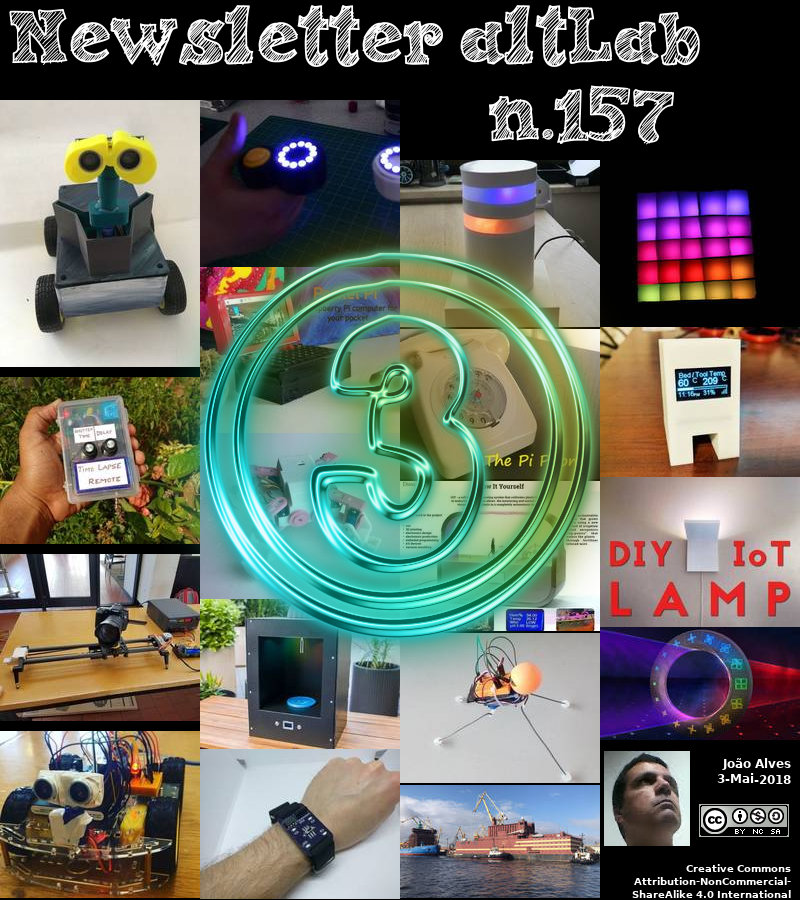
Editorial
Esta é a Newsletter Nº 157 que se apresenta com o mesmo formato que as anteriores. Se gostar da Newsletter partilhe-a!
Todas as Newsletters encontram-se indexadas no link.
Esta Newsletter tem os seguintes tópicos:
Faz 3 anos que embarquei nesta missão de trazer a todos os membros e seguidores do altLab uma Newsletter semanal com tudo o que acontece pela Internet ao longo da semana. Foram mais de 3000 artigos e noticias, 430 ebooks e revistas de livre acesso, mais de 350 modelos 3D para descarregar e imprimir e 4900 projectos de maker grande parte deles com dicas particularmente interessantes e replicáveis. O trabalho não acabou e vamos continuar a apresentar a informação com a mesma frequência. Algumas novidades irão ser apresentadas ao longo das próximas semanas das quais destacarei a possibilidade de ver vídeos dos artigos quando têm esse tipo de conteúdo e dar uma classificação ao artigo de forma a podermos eleger os mais interessantes do mês dando-lhe um destaque particular. O vosso feedback tem sido muito importante e iremos também em breve fazer algumas modificações ao nível do site para que os conteúdos possam estar disponíveis duma forma ainda mais simples, rápida e amigável.
Faz hoje anos que nascia, em 1695, Henri Pitot. Este engenheiro hidráulico francês ficou conhecido por ter inventado o tubo de Pitot (1732), um instrumento para medir a velocidade do fluxo em líquidos ou gases. Com melhorias subsequentes por Henri Darcy, sua forma moderna é usada para determinar a velocidade do ar de aeronaves. Embora originalmente um matemático e astrónomo treinado, ele envolveu-se numa investigação da velocidade da água fluindo em diferentes profundidades, para a qual ele primeiro que criou o tubo de Pitot. Ele desaprovou a crença predominante de que a velocidade da corrente da água aumentava com a profundidade.
Faz também anos hoje que nascia, em 1860, Vito Volterra. Este matemático italiano fez importantes contribuições para o cálculo e teorias matemáticas em astronomia, elasticidade e biometria. O seu talento matemático apareceu quando era jovem. Em 1905, ele começou a desenvolver a teoria dos deslocamentos em cristais que levou a uma melhor compreensão do comportamento dos materiais dúctis. Durante a Primeira Guerra Mundial, ele estabeleceu o Escritório Italiano de Invenções de Guerra e projectou armas para uso em aeronaves, para o qual ele propôs o uso de hélio em vez de hidrogénio inflamável. Ele é lembrado por conquistas na teoria das funções e equações diferenciais. Em biologia, em 1925, ele formulou um par de equações diferenciais relacionando populações de presas e predadores (também proposto independentemente por Alfred J. Lotka em 1925).
Faz igualmente anos hoje que nascia, em 1874, Vagn Walfrid Ekman. Este oceanógrafo físico sueco e físico matemático fez importantes pesquisas sobre a dinâmica das correntes oceânicas e levou o seu nome a permanecer associado a termos de fenómenos particulares do oceano ou da atmosfera, incluindo a espiral de Ekman, o transporte de Ekman e a camada de Ekman. Fridtjof Nansen indicou a Ekman que ele tinha observado que os icebergues flutuavam com um ângulo de 20 ° a 40 ° em relação ao vento predominante, em vez de directamente com o vento. Em 1902, Ekman publicou uma explicação, conhecida agora como a espiral de Ekman, descrevendo o movimento das correntes oceânicas influenciadas pela rotação da Terra. Ele também desenvolveu técnicas experimentais e instrumentos como o medidor de corrente Ekman e a garrafa de água Ekman.
Faz também anos hoje que nascia, em 1892, George Paget Thomson. Este físico inglês que partilhou (com Clinton J. Davisson dos EUA) o Prémio Nobel de Física em 1937 por demonstrar que os electrões sofrem difracção, um comportamento peculiar às ondas que é amplamente explorado na determinação da estrutura atómica de sólidos e líquidos. Ele era o filho de Sir J.J. Thomson, que descobriu o electrão como uma partícula.
Faz igualmente anos hoje que nascia, em 1902, Alfred Kastler. Este físico francês ganhou o Prémio Nobel de Física em 1966 pela sua descoberta e desenvolvimento de métodos para observar ressonâncias hertzianas dentro de átomos. Esta pesquisa facilitou a maior compreensão da estrutura do átomo estudando as radiações que os átomos emitem quando excitados pelas ondas de luz e de rádio. Ele desenvolveu um método chamado "bombeamento óptico", que fazia com que átomos numa substância de amostra entrassem em estados de energia mais elevados. Esta ideia foi um importante predecessor do desenvolvimento dos masers e dos lasers que utilizavam a energia luminosa que era reemitida quando os átomos excitados libertavam a energia extra obtida pelo bombeamento óptico.
Por fim, faz anos hoje que nascia, em 1933, Steven Weinberg. Este físico nuclear norte-americano partilhou o Prémio Nobel de Física de 1979 (com Sheldon Lee Glashow e Abdus Salam) por trabalhar na formulação da teoria eletrofraca, que explica a unidade do electromagnetismo com a força nuclear fraca.
Fez esta semana que passou 20 anos que o CERN colocou o software da World Wide Web no domínio público. O CERN disponibilizou o próximo lançamento com uma licença aberta, como uma maneira mais segura de maximizar sua disseminação. Por meio dessas acções, tornando o software necessário para executar um servidor da Web livremente disponível, juntamente com um navegador básico e uma biblioteca de código, a Web pôde florescer. O físico britânico Tim Berners-Lee inventou a web no CERN em 1989. O projecto, que Berners-Lee denominou "World Wide Web", foi originalmente concebido e desenvolvido para atender à demanda de partilha de informações entre físicos em universidades e institutos ao redor do mundo tendo posteriormente sido abraçado por todos.
Também esta semana ficámos a saber que ficou terminada a construção da única unidade de energia nuclear flutuante (FPU) 'Academik Lomonosov' do mundo. Tendo a sua construção começado em meados de 2009 ficou agora concluída a primeira fase do projecto. A central nuclear flutuante tem duas unidades de reactores KLT-40S que podem gerar até 70 MW de energia eléctrica e 50 Gcal / h de energia térmica durante sua operação normal. Isto é suficiente para manter o funcionamento de uma cidade povoada com 100.000 pessoas. O FPU é o único e o primeiro projecto do mundo da unidade de energia móvel transportável de baixa potência. Ele é projectado para a operação nas áreas do Extremo Norte e do Extremo Oriente Russo. A sua principal tarefa é fornecer energia eléctrica as unidades industriais remotas, as cidades portuárias, bem como as plataformas offshore de gás e petróleo. O FNPP é projectado com a grande margem de segurança que excede todas as ameaças possíveis e torna os reactores nucleares invencíveis para tsunamis e outros desastres naturais.
Ainda esta semana a Blue Origin, empresa espacial privada fundada pelo bilionário Jeff Bezos, lançou a sua nave espacial de passageiros New Shepard num voo de teste, carregando um astronauta fictício e experiências nos seus voos espaciais mais altos até agora. O foguetão e a cápsula New Shepard 2.0, que já voaram no espaço antes, descolaram do local de lançamento da Blue Origin em West Texas às 13h06. EDT (1706 GMT). Apesar de várias horas de atraso (trovoadas frustraram uma meta de lançamento de EDT às 9h45) e contagem regressiva para testes de última hora, o voo pareceu ir de acordo com o planeado. "Outra missão de teste espectacular", disse Ariane Cornell, da Blue Origin, durante um webcast de lançamento. "Tudo parece nominal daqui." A Blue Origin lançou o New Shepard para uma altitude alvo de 351.000 pés (106.984 metros), disse Bezos após o lançamento.
Também esta semana, uma frota recorde de 1.374 drones sobrevoou a Muralha da Cidade de Xi'an, na província de Shaanxi, noroeste da China, no domingo passado, fazendo um novo Recorde Mundial do Guinness. Lançados junto da Muralha da Cidade de Xi'an, os drones que participaram do desafio foram fornecidos pela EHANG Egret, uma fabricante de drones na China. O show foi premiado com o título do Recorde Mundial do Guinness de "A maioria dos veículos aéreos não tripulados (UAVs) no ar simultaneamente", quebrando o recorde anterior de 1.218 drones da Intel nos Jogos Olímpicos de Inverno de Pyeongchang. Durante o show de 13 minutos, os drones descolaram da parede estreita e longa da cidade, o que criou uma enorme cortina de luzes medindo mais de 1.200 metros de comprimento e 100 metros de largura. A tela pôde ser vista a 260 metros acima da parede. Dezasseis padrões e ícones tradicionais chineses, como a Muralha da Cidade de Xi'an, a Rota da Seda e o número 1374 foram criados pela frota durante o show de luzes.
Na Newsletter desta semana apresentamos diversos projetos de maker assim comoum modelo 3D para imprimir.
 João Alves ([email protected])
João Alves ([email protected])
O conteúdo da Newsletter encontra-se sob a licença  Creative Commons Attribution-NonCommercial-ShareAlike 4.0 International License.
Creative Commons Attribution-NonCommercial-ShareAlike 4.0 International License.
Novidades da Semana
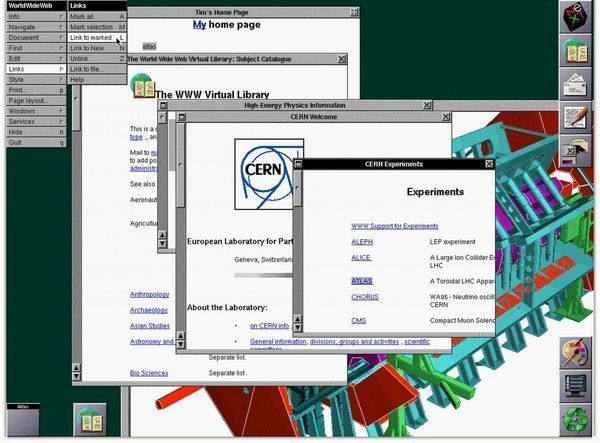
Twenty years of a free, open web
"On 30 April 1993 CERN put the World Wide Web software in the public domain. CERN made the next release available with an open licence, as a more sure way to maximise its dissemination. Through these actions, making the software required to run a web server freely available, along with a basic browser and a library of code, the web was allowed to flourish. British physicist Tim Berners-Lee invented the web at CERN in 1989. The project, which Berners-Lee named "World Wide Web", was originally conceived and developed to meet the demand for information sharing between physicists in universities and institutes around the world. Other information retrieval systems that used the internet - such as WAIS and Gopher - were available at the time, but the web's simplicity along with the fact that the technology was royalty free led to its rapid adoption and development." [...]

The world's only floating power unit 'Akademik Lomonosov' takes the sea
"On 28 April, 2018, the world's only floating nuclear power unit (FPU) ‘Academik Lomonosov’ has left the territory of Baltiyskiy Zavod in St. Petersburg, where its construction had been carried out since 2009, and headed to its base in Chukotka. According to the Deputy Head of the Directorate for the Floating NPP Construction and Operation Dmitriy Alekseenko, the FPU towing to Pevek (ChAO) was planned in two stages: from St. Petersburg to Murmansk, and then from Murmansk to Pevek. ‘At the first stage, the FPU with no nuclear fuel on board will be towed from the territory of Baltiyskiy Zavod to the landing of Atomflot FSUE in Murmansk. Then, at the second stage (roughly in the summer of 2019) it will be sent from Murmansk to the seaport of Pevek, loaded with nuclear fuel and with the crew on board’, D. Alekseyenko said. According to Vitaliy Trutnev, the Head of the Directorate for the Floating NPP Construction and Operation, in recent months the intensity of the work at the facility had significantly increased, which allowed Rosenergoatom Concern (the facility requestor) to be sure that the floating power unit was ready in time. ‘To date, a part of the work provided for by the contract with Baltiyskiy Zavod Shipbuilding has been successfully completed." [...]

Blue Origin Launches New Shepard Space Capsule on Highest Test Flight Yet
"Blue Origin, the private space company founded by billionaire Jeff Bezos, launched its passenger spaceship New Shepard on a test flight Sunday (April 29), carrying a dummy astronaut and experiments on their highest spaceflight yet. The New Shepard 2.0 rocket and capsule, both of which have flown in space before, lifted off from Blue Origin's West Texas launch site at 1:06 p.m. EDT (1706 GMT). Despite several hours of delays (thunderstorms thwarted a 9:45 a.m. EDT launch target) and countdown holds for last-minute checks, the flight appeared to go flawlessly. "Another spectacular test mission," Ariane Cornell of Blue Origin said during a launch webcast. "Everything looks nominal from here." Blue Origin launched New Shepard to a target altitude of 351,000 feet (106,984 meters), Bezos said after the launch." [...]

Drone Guinness record broken above Chinese ancient city wall
"A record-breaking fleet of 1,374 drones danced over the City Wall of Xi'an, in northwest China's Shaanxi Province last Sunday, making a new Guinness World Record. Launched by the City Wall of Xi'an, the drones taking part in the challenge were provided by EHANG Egret, a drone manufacturer in China. The show was awarded the Guinness World Record title for "Most Unmanned Aerial Vehicles (UAVs) airborne simultaneously," breaking Intel's previous record of 1,218 drones at the PyeongChang Winter Olympics. During the 13 minute show, the drones took off from the narrow and long city wall, created a huge curtain of lights measuring over 1,200 meters in length and 100 meters in width. The display could be seen 260 meters above the wall. Sixteen patterns and Chinese traditional icons such as the Xi'an City Wall, the Silk Road, and the number 1374 were created by the fleet during the light show." [...]
Outras Notícias

BigRep Defies Conventions with Custom Wheel Rims
"The wheels are always in motion here at BigRep, to consistently dream up objects that push the boundaries of design for 3D printing. BigRep Product Designer Marco Mattia Cristofori wanted to develop an object that demonstrated the benefit of 3D printing for industrial use, while also focusing on original, striking design. Introducing, the BigRep wheel rim. Like BigRep as a company, working at the intersection of design and technology, Cristofori’s wheel rim is a meeting of advanced design and industry. In preparing for this project, Cristofori looked at wheel rims and hubcaps for vehicles, and thought he could go even further with a design that what you usually see gracing the average car. An alternative to CNC-machining a prototype, he wanted to design the wheel rim prototype for large-scale 3D printing." [...]

NASA's First Mission to Study the Interior of Mars Awaits May 5 Launch
"All systems are go for NASA's next launch to the Red Planet. The early-morning liftoff on Saturday of the Mars InSight lander will mark the first time in history an interplanetary launch will originate from the West Coast. InSight will launch from the U.S. Air Force Vandenberg Air Force Base Space Launch Complex 3E. The two-hour launch window will open on May 5 at 4:05 a.m. PDT (7:05 a.m. EDT). InSight, for Interior Exploration using Seismic Investigations, Geodesy and Heat Transport, will launch aboard aUnited Launch Alliance (ULA) Atlas V rocket. InSight will study the deep interior of Mars to learn how all rocky planets formed, including Earth and its Moon." [...]

Announcing the release of Fedora 28
"Hey everyone! It’s May, right around Mother’s Day in many countries, and that means it’s time for the next Fedora operating system release: Fedora 28 is here! Read more below… You can just go straight to download from: Get Fedora 28 Workstation Get Fedora 28 Server Get Fedora 28 Atomic Host ← includes click-to-launch link for Amazon EC2 If you’re already using Fedora, you can upgrade from the command line or use GNOME Software for an easy graphical update — upgrade instructions here. We’ve put a lot of work into making upgrades simple and fast. In most cases, this will take half an hour or so, bringing you right back to a working system with no hassle. (Personally, I ran the commands on my main desktop right before bedtime last night, and came back to a perfectly working system when I woke up.)" [...]
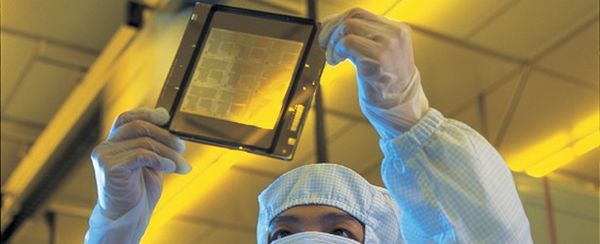
WoW! TSMC Sticks Whole Wafers Together
"Today it is the TSMC Technology Symposium. As always, Cadence is making several announcements jointly with TSMC. 5nm and 7nm+ This isn't the biggest surprise announcement of the year. Cadence is collaborating with TSMC on 5nm and 7nm+ high-performance processes primarily targeted at advanced mobile and high-performance computing (HPC). There is certification of the digital and signoff flow, the custom/analog flow, and the library characterization flow. There is a press release, but you can pretty much take last year's, or the year before's, and just lower the numbers." [...]
Ciência e Tecnologia
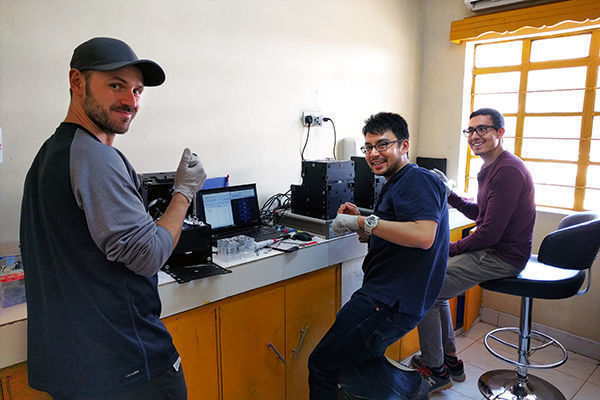
Lab-on-a-chip delivers critical immunity data for vulnerable populations
"For millions of displaced people around the world — many of them refugees, living in temporary shelters under crowded conditions — an outbreak of disease is devastating. Each year, the measles virus kills more than 134,000 people globally, and another 100,000 children are born with defects caused by congenital rubella syndrome. Both diseases are preventable by vaccination. Now, a team of researchers from the University of Toronto, including alumni Alphonsus Ng (IBBME PhD 1T5) and Ryan Fobel (IBBME PhD 1T6), has applied a hacker mentality to developing a portable, reconfigurable lab-on-a-chip diagnostic platform and field-tested the system in remote Kenya. Their validated platform can gauge the level of immunity to vaccine-preventable diseases among vulnerable populations. Their work appears today in the journal Science Translational Medicine." [...]

Transparent Eel-like Soft Robot Can Swim Silently Underwater
"An innovative, eel-like robot developed by engineers and marine biologists at the University of California can swim silently in salt water without an electric motor. Instead, the robot uses artificial muscles filled with water to propel itself. The foot-long robot, which is connected to an electronics board that remains on the surface, is also virtually transparent. The team, which includes researchers from UC San Diego and UC Berkeley, details their work in the April 25 issue of Science Robotics. Researchers say the bot is an important step toward a future when soft robots can swim in the ocean alongside fish and invertebrates without disturbing or harming them. Today, most underwater vehicles designed to observe marine life are rigid and submarine-like and powered by electric motors with noisy propellers." [...]
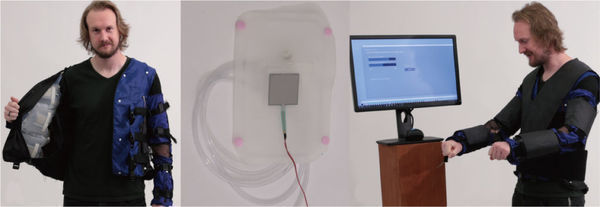
Force Jacket: Pneumatically-Actuated Jacket for Embodied Haptic Experiences
"Immersive experiences seek to engage the full sensory system in ways that words, pictures, or touch alone cannot. With respect to the haptic system, however, physical feedback has been provided primarily with handheld tactile experiences or vibration-based designs, largely ignoring both pressure receptors and the full upper-body area as conduits for expressing meaning that is consistent with sight and sound. We extend the potential for immersion along these dimensions with the Force Jacket, a novel array of pneumatically-actuated airbags and force sensors that provide precisely directed force and high-frequency vibrations to the upper body. We describe the pneumatic hardware and force control algorithms, user studies to verify perception of airbag location and pressure magnitude, and subsequent studies to define full-torso, pressure and vibration-based feel effects such as punch, hug, and snake moving across the body. We also discuss the use of those effects in prototype virtual reality applications. " [...]

Surrey creates new tool to speed up the design of wearable tech
"People could soon power items such as their mobile phones or personal health equipment by simply using their daily movements, thanks to a new research tool that could be used by manufacturers. In a new paper published by Nano Energy, experts from the Advanced Technology Institute (ATI) at the University of Surrey detail a new methodology that allows designers of smart-wearables to better understand and predict how their products would perform once manufactured and in use. The technology is centred on materials that become electrically charged after they come into contact with each other, known as triboelectric materials – for example, a comb through hair can create an electrical charge. Triboelectric Nanogenerators (TENGs), use this static charge to harvest energy from movement through a process called electrostatic induction. Over the years, a variety of TENGs have been designed which can convert almost any type of movement into electricity. The University of Surrey’s tool gives manufacturers an accurate understanding of the output power their design would create once produced." [...]

Cheaper and easier way found to make plastic semiconductors
"Cheap, flexible and sustainable plastic semiconductors will soon be a reality thanks to a breakthrough by chemists at the University of Waterloo. Professor Derek Schipper and his team at Waterloo have developed a way to make conjugated polymers, plastics that conduct electricity like metals, using a simple dehydration reaction the only byproduct of which is water. “Nature has been using this reaction for billions of years and industry more than a hundred,” said Schipper, a professor of Chemistry and a Canada Research Chair in Organic Material Synthesis. “It’s one of the cheapest and most environmentally friendly reactions for producing plastics.” Schipper and his team have successfully applied this reaction to create poly(hetero)arenes, one of the most studied classes of conjugated polymers which have been used to make lightweight, low- cost electronics such as solar cells, LED displays, and chemical and biochemical sensors. Dehydration is a common method to make polymers, a chain of repeating molecules or monomers that link up like a train. Nature uses the dehydration reaction to make complex sugars from glucose, as well as proteins and other biological building blocks such as cellulose." [...]
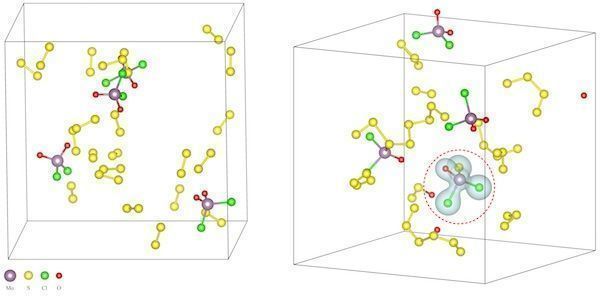
Salt boosts creation of 2-D materials
"Rice scientists show how salt lowers reaction temperatures to make novel materials A dash of salt can simplify the creation of two-dimensional materials, and thanks to Rice University scientists, the reason is becoming clear. Boris Yakobson, a Rice professor of materials science and nanoengineering and of chemistry, was the go-to expert when a group of labs in Singapore, China, Japan and Taiwan used salt to make a “library” of 2-D materials that combined transition metals and chalcogens. These compounds could lead to smaller and faster transistors, photovoltaics, sensors and catalysts, according to the researchers. Through first-principle molecular dynamics simulations and accurate energy computations, Yakobson and his colleagues determined that salt reduces the temperature at which some elements interact in a chemical vapor deposition (CVD) furnace. That makes it easier to form atom-thick layers similar to graphene but with the potential to customize their chemical composition for specific layer-material and accordingly electrical, optical, catalytic and other useful properties. The research team including Yakobson and Rice postdoctoral researcher Yu Xie and graduate student Jincheng Lei reported its results this week in Nature." [...]
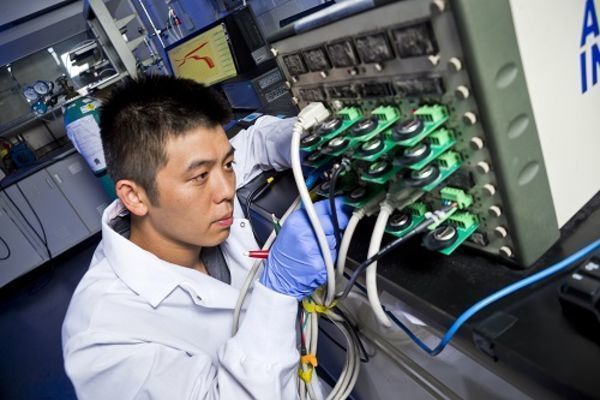
UMD Researchers Revive Old Chemistry to Create Safer Zinc Battery
"A team of researchers from the University of Maryland's A. James Clark School of Engineering have created a water-based zinc battery that is simultaneously powerful, rechargeable, and intrinsically safe. The new aqueous zinc battery could eventually be used in consumer electronics, as well as in extreme conditions to improve the performance of safety-critical equipment and vehicles used in aerospace, military, and deep-ocean environments. Together with colleagues at the U.S. Army Research Laboratory (ARL) and National Institute of Standards and Technology (NIST), UMD engineers used metallic zinc – an element used in 1799 in the very first battery – to crank up the energy of their own 2015 advance in battery technology. That previous UMD advance used a novel and safe water-in-salt electrolyte to replace the flammable organic electrolyte used in conventional lithium-ion batteries. The team’s peer-reviewed paper based on their latest research was published April 16 in the journal Nature Materials. "Water-based batteries could be crucial to preventing fires in electronics, but their energy storage and capacity have been limited – until now." [...]
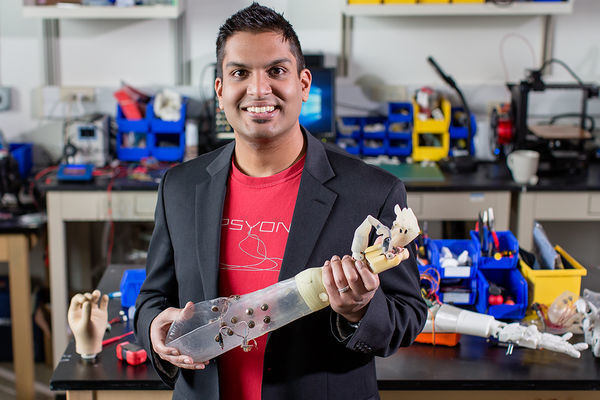
Prosthetic arms can provide controlled sensory feedback, study finds
"Losing an arm doesn’t have to mean losing all sense of touch, thanks to prosthetic arms that stimulate nerves with mild electrical feedback. University of Illinois researchers have developed a control algorithm that regulates the current so a prosthetics user feels steady sensation, even when the electrodes begin to peel off or when sweat builds up. “We’re giving sensation back to someone who’s lost their hand. The idea is that we no longer want the prosthetic hand to feel like a tool, we want it to feel like an extension of the body,” said Aadeel Akhtar, an M.D./Ph.D. student in the neuroscience program and the medical scholars program at the University of Illinois. Akhtar is the lead author of a paper describing the sensory control module, published in Science Robotics, and the founder and CEO of PSYONIC, a startup company that develops low-cost bionic arms." [...]

NIST Team Shows Tiny Frequency Combs Are Reliable Measurement Tools
"In an advance that could shrink many measurement technologies, scientists at the National Institute of Standards and Technology (NIST) and partners have demonstrated the first miniaturized devices that can generate desired frequencies, or colors, of light precisely enough to be traced to an international measurement standard. The researchers combined a pair of frequency combs, a tunable mini-laser, and electronics to create an optical frequency synthesizer. The advance transfers the capability to program optical frequencies from tabletop-scale instruments to three silicon chips, while retaining high accuracy and precision. Just as radio and microwave chips powered the electronics revolution, the miniaturization of optical frequency synthesizers to make them portable and suited to high-volume fabrication should boost fields such as timekeeping, communications, trace gas monitoring and astronomy. The prototype synthesizer is described in the journal Nature, in a paper posted online April 25. Frequency combs are a Nobel-honored technology developed at NIST that are crucial to the latest experimental atomic clocks." [...]
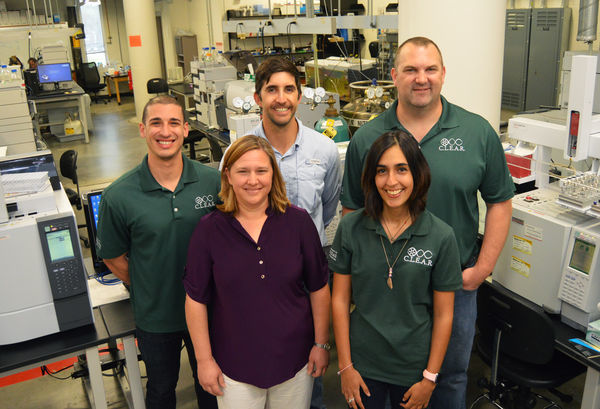
UTA expands efforts to develop water recycling technologies
"The Collaborative Laboratories for Environmental Analysis and Remediation at The University of Texas at Arlington has expanded its partnership with oil field equipment supplier Challenger Water Solutions to develop water recycling technologies that will transform waste from unconventional oil and gas development into reusable water. This collaboration has already resulted in a study published in the journal Science of the Total Environment, where CLEAR evaluated a modular, multi-step water treatment system designed by CWS within the contexts of reuse for production well stimulation. The CLEAR research team determined that under a wide range of conditions, multiple treatment modalities were required to remove pertinent contaminants, the presence of which can preclude oilfield waste from being recycled and reused. “As hydrocarbon extraction has expanded considerably across Texas, particularly in western Texas, so too has the reliance on fresh water resources to facilitate the stimulation of production wells,” said Kevin Schug, interim associate dean of the College of Science and Director of CLEAR. “This has provided a tremendous impetus for the recycling and reuse of produced waste, both of which are very difficult to accomplish effectively and economically given the physiochemical complexities of these waste solutions.” “Through this partnership with Challenger Water Solutions, we have been able to assess important organic, inorganic and biological constituents throughout the multi-step process, whereby we found that waste streams could be transformed into a resource for reuse by the oil and gas industry,” he said. “UTA’s ongoing efforts will include developing therapies for the treatment of harmful bacteria in the water that are resistant to traditional forms of disinfection,” added Dr. Zacariah Hildenbrand, co-founder and scientific contributor to CLEAR." [...]

Breaking bottlenecks to the electronic-photonic information technology revolution
"Researchers at the University of Washington, working with researchers from the ETH-Zurich, Purdue University and Virginia Commonwealth University, have achieved an optical communications breakthrough that could revolutionize information technology. They created a tiny device, smaller than a human hair, that translates electrical bits (0s and 1s of the digital language) into light, or photonic bits, at speeds 10s of times faster than current technologies. “As with earlier advances in information technology, this can dramatically impact the way we live,” said Larry Dalton, a UW chemistry professor emeritus and leader in photonics research. These new electro-optic devices approach the size of current electronic circuit elements and are important for integrating photonics and electronics on a single chip. The new technology also involves utilization of a particle, a plasmon polariton, that has properties intermediate between electrons and photons. This hybrid particle technology is referred to as plasmonics." [...]

Nanowires could make lithium ion batteries safer
"“Mg2B2O5 Nanowires Enabled Multifunctional Solid-State Electrolyte with High Ionic Conductivity, Excellent Mechanical Properties and Flame-retardant Performance” Nano Letters From cell phones and laptops to electric vehicles, lithium-ion batteries are the power source that fuels everyday life. But in recent years, they have also drawn attention for catching fire. In an effort to develop a safer battery, scientists report in the ACS journal Nano Letters that the addition of nanowires can not only enhance the battery’s fire-resistant capabilities, but also its other properties. In lithium-ion batteries (LIBs), lithium ions move back and forth between electrodes through an electrolyte. Traditional LIBs have a liquid electrolyte made of salts and organic solvents, but it evaporates easily and can be a fire hazard. So, researchers have turned their attention to solid-state electrolytes as potential alternatives." [...]

Novel fibre optic receiver helps researchers break data transmission record
"A group of scientists developed a new energy-saving optical receiver with rapid power-on/off functionality. Data infrastructures are increasingly strained by the rapid development in new technologies – from 5G to the Internet of Things – where the demand for bandwidth-hungry applications continues to rise. Optical connectivity requirements imposed by such data explosion means there’s a growing need for energy-efficient, multi-channel links with fast data transfer rates. Representatives from IBM Research, together with a consortium from the EU-funded ADDAPT project, have introduced a novel optical receiver that can support an aggregate bandwidth of 160 Gb/s through 4 optical fibres. Their work was announced in a press release by the Optical Society (OSA): “This is not only the fastest data transmission speed to date, but the newly developed optical receiver also features the link power-on/off functionality.” The receiver can activate and achieve phase-lock in 8 ns, the shortest switch time on record, according to the researchers. They also argued that link utilisation in data centres is less than 10 % for 99 % of the links." [...]
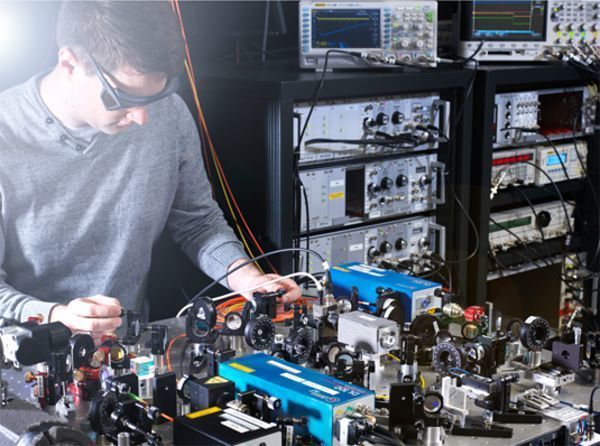
A step closer to the optical nuclear clock
"Researchers report a significant advance toward the realization of the world’s first nuclear clock. They have succeeded in characterizing fundamental features of the thorium-229 isomer that could provide the core of such an instrument. Precise time measurements play a vital role in our daily life. They allow reliable navigation, permit extremely accurate experimentation and provide the basis for synchronised world-wide exchange of data. A team of researchers of the Physikalisch-Technische Bundesanstalt (PTB) in Braunschweig, Ludwig-Maximilians-University Munich (LMU), Johannes Gutenberg University Mainz (JGU), the Helmholtz Institute Mainz (HIM), and the GSI Centre for Heavy Ion Research in Darmstadt now reports on a decisive step toward the potential development of a "nuclear" clock, which has the potential to significantly outperform the best current atomic clocks. The only known excited state of an atomic nucleus whose excitation energy is sufficiently low to be accessible by optical techniques comparable to those used in current atomic clocks, exists in thorium-229." [...]

'Infinitely' recyclable polymer shows practical properties of plastics
"The world fell in love with plastics because they’re cheap, convenient, lightweight and long-lasting. For these same reasons, plastics are now trashing the Earth. Colorado State University chemists have announced in the journal Science another major step toward waste-free, sustainable materials that could one day compete with conventional plastics. Led by Eugene Chen, professor in the Department of Chemistry, they have discovered a polymer with many of the same characteristics we enjoy in plastics, such as light weight, heat resistance, strength and durability. But the new polymer, unlike typical petroleum plastics, can be converted back to its original small-molecule state for complete chemical recyclability. This can be accomplished without the use of toxic chemicals or intensive lab procedures." [...]

World's hardest material, diamond, is flexible
"Diamond, the world’s hardest natural material, is also flexible when made into nanoscale needles, according to a paper published in Science today about a surprising discovery by an international team of scientists that includes Prof Subra Suresh, President of Nanyang Technological University, Singapore (NTU Singapore). The research team demonstrated that diamond nano-needles - about a thousand times thinner than a strand of human hair - can be bent and stretched up to nine per cent, before bouncing back to their original state when pressure is removed. Bulk diamond, in sizes easily visible to the naked eye, would be expected to stretch by well below one per cent, while a similar lack of deformability is also observed for other typically strong and brittle materials, and attempts to flex them cause them to break. The scientists predict that their discovery may lead to new applications in bioimaging and biosensing, drug delivery, data storage, opto-electronic devices and ultra-strength nanostructures. Using elastic strains induced by mechanical deformation, such as bending, also opens up new avenues to tailor electrical, magnetic, optical and other physical properties. Published today (20 Apr) in the journal Science, the finding was made by an interdisciplinary team whose senior author is Prof Subra Suresh, President and also Distinguished University Professor at NTU Singapore." [...]

New materials for sustainable, low-cost batteries
"A new conductor material and a new electrode material could pave the way for inexpensive batteries and therefore the large-scale storage of renewable energies. The energy transition depends on technologies that allow the inexpensive temporary storage of electricity from renewable sources. A promising new candidate is aluminium batteries, which are made from cheap and abundant raw materials (see box). Scientists from ETH Zurich and Empa – led by Maksym Kovalenko, Professor of Functional Inorganic Materials – are among those involved in researching and developing batteries of this kind. The researchers have now identified two new materials that could bring about key advances in the development of aluminium batteries. The first is a corrosion-resistant material for the conductive parts of the battery; the second is a novel material for the battery’s positive pole that can be adapted to a wide range of technical requirements." [...]

Controlling the crystal structure of gallium oxide
"Precise control of the atomic structure of gallium-oxide layers improves the development of high-power electronic devices. A simple method that uses hydrogen chloride can better control the crystal structure of a common semiconductor and shows promise for novel high-powered electronic applications. The electronic components used in computers and mobile devices operate at relatively lower power. But high-power applications, such as controlling electrical power grids, require alternative materials that can cope with much higher voltages. For example, an insulating material begins to conduct electricity when the field is high enough, an effect known as electrical breakdown. For this reason, power electronics often use nitride-based semiconductors, such as gallium nitride, which have a very high breakdown field and can be epitaxially grown to create multilayered semiconductors." [...]

Scientists introduce the data storage of the future
"Researchers have developed a new molecule magnet design that would bring high-density, nanoscale data storage into the realm of possibility. Single-molecule magnets (SMMs) have been attracting a lot of attention recently. This is because of the increased demand for faster, longer-lasting and lower-energy IT systems, and the need for higher data storage capacity. Partially supported by the EU-funded project PhotoSMM, researchers have introduced a novel design for SMMs which could lead to information storage on a nanometric scale. Their findings were published recently in the ‘Angewandte Chemie’ journal. SMMs are a type of complex compound that can retain magnetic information at low temperatures." [...]

Electrochemical Tuning of Single Layer Materials Relies on Defects
"Perfection is not everything, according to an international team of researchers whose 2-D materials study shows that defects can enhance a material's physical, electrochemical, magnetic, energy and catalytic properties. "Electronic devices, like transistors, are usually made from relatively bulky stacked layers of metal, oxides and crystalline semiconductors," said Shengxi Huang, assistant professor of electrical engineering, Penn State. "We would like to make them with two-dimensional materials so that they can be faster, smaller and more flexible." To do this, the researchers are looking at molybdenum sulfide single atomic layers. They report the results of their investigation in a recent issue of ACS Nano. Molybdenum sulfide is a molecule made up of one molybdenum atom with two sulfur atoms attached." [...]
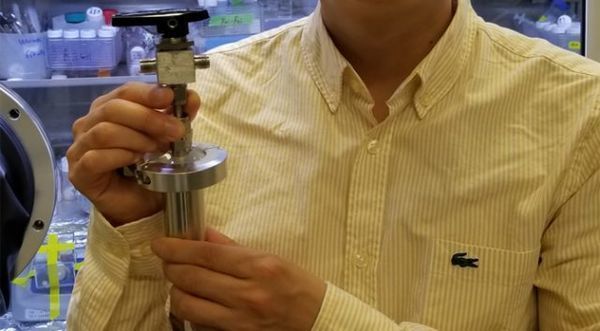
Stanford researchers have developed a water-based battery to store solar and wind energy
"Stanford scientists have developed a manganese-hydrogen battery that could fill a missing piece in the nation’s energy puzzle by storing wind and solar energy for when it is needed, lessening the need to burn carbon-emitting fossil fuels. Stanford researchers have developed a water-based battery that could provide a cheap way to store wind or solar energy generated when the sun is shining and wind is blowing so it can be fed back into the electric grid and be redistributed when demand is high. The prototype manganese-hydrogen battery, reported April 30 in Nature Energy, stands just three inches tall and generates a mere 20 milliwatt hours of electricity, which is on par with the energy levels of LED flashlights that hang on a key ring. Despite the prototype’s diminutive output, the researchers are confident they can scale up this table-top technology to an industrial-grade system that could charge and recharge up to 10,000 times, creating a grid-scale battery with a useful lifespan well in excess of a decade. Yi Cui, a professor of materials science at Stanford and senior author on the paper, said manganese-hydrogen battery technology could be one of the missing pieces in the nation’s energy puzzle – a way to store unpredictable wind or solar energy so as to lessen the need to burn reliable but carbon-emitting fossil fuels when the renewable sources aren’t available. “What we’ve done is thrown a special salt into water, dropped in an electrode, and created a reversible chemical reaction that stores electrons in the form of hydrogen gas,” Cui said." [...]
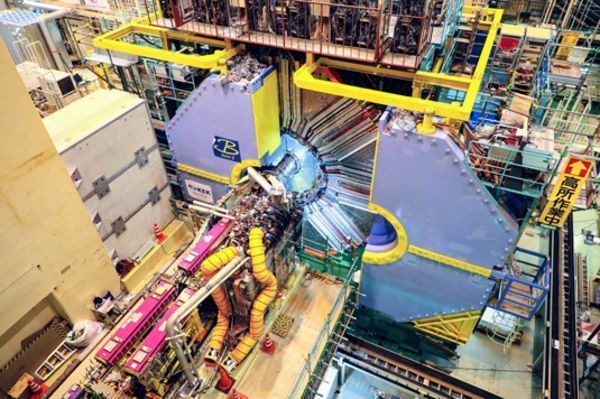
Belle II Measures First Particle Collisions
"In the new SuperKEKB accelerator in Japan the first collisions of matter and anti-matter particles have been detected. Scientists from LMU and the Universe Cluster are involved in the experiments. Particle physicists have been waiting for this moment for a long time: On 26 April 2018 at 0:38 GMT+09:00 at KEK (Japan’s High Energy Accelerator Research Organization) in Tsukuba, beams of matter and anti-matter particles collided for the first time in the new SuperKEKB accelerator. News of this success came from the detector, too: The Belle II instrument, which is also a new development, “saw” and recorded the particle tracks produced in the collision. Scientists hope the experiment will help them to understand why the original balanced ratio of matter to anti-matter in the Universe changed, so that it now contains virtually none of the latter. What is the key to solving the matter/anti-matter mystery?" [...]

Laser frequency combs may be the future of Wi-Fi
"Discovery has the potential of increasing the capacity of wireless communications Wi-Fi and cellular data traffic are increasing exponentially but, unless the capacity of wireless links can be increased, all that traffic is bound to lead to unacceptable bottlenecks. Upcoming 5G networks are a temporary fix but not a long-term solution. For that, researchers have focused on terahertz frequencies, the submillimeter wavelengths of the electromagnetic spectrum. Data traveling at terahertz frequencies could move hundreds of times faster than today’s wireless. In 2017, researchers at the Harvard John A. Paulson School of Engineering and Applied Sciences (SEAS) discovered that an infrared frequency comb in a quantum cascade laser could offer a new way to generate terahertz frequencies. Now, those researchers have uncovered a new phenomenon of quantum cascade laser frequency combs, which would allow these devices to act as integrated transmitters or receivers that can efficiently encode information." [...]

How to assess new solar technologies
"MIT analysis shows when and where advanced photovoltaics would be economic to install. Which is a better deal: an established, off-the-shelf type of solar panel or a cutting-edge type that delivers more power for a given area but costs more? It turns out that’s far from a simple question, but a team of researchers at MIT and elsewhere has come up with a way to figure out the best option for a given location and type of installation. The bottom line is that for household-scale rooftop systems in relatively dry locations, the more efficient but more costly panels would be better, but for grid-scale installations or for those in wetter climates, the established, less efficient but cheaper panels are better. The costs of solar cells continue to plummet, while the costs of installation and the associated equipment remain relatively constant. So, figuring out the tradeoffs involved in planning a new installation has gotten more complicated." [...]

A Surprising New Superconductor
"CIRES expert and NIST colleagues discover electroplated rhenium’s unexpected superconductive characteristics Last September, CIRES chemist and instrument designer Don David and colleagues Dave Pappas and Xian Wu at the National Institute of Standards and Technology discovered a powerful new plated metal combination that superconducts at easily attained temperatures—paving the road for the next critical steps in the development of cutting-edge supercomputers. David and his colleagues just published the new recipe: an ultrathin layer of rhenium sandwiched between layers of gold, each measuring 1/1000th the diameter of a human hair that can superconduct at critical temperature over 6 Kelvin. “The sheer magnitude of the critical temperature was unexpected,” said Don David, director of the CIRES Integrated Instrument Development Facility and coauthor on a paper published this week in Applied Physics Letters. “We had been thinking for a while about ways to impart superconducting properties to gold and copper films, and we were surprised at how robust and effective the thin layer of electroplated Re was.” THE PROCESS OF ELECTROPLATING IN THE CIRES INTRUMENT LAB. PHOTO: KATIE WEEMAN/CIRES A superconductor is a material with zero electrical resistance when cooled to a critical temperature. This temperature is usually strikingly low and expensive to obtain." [...]
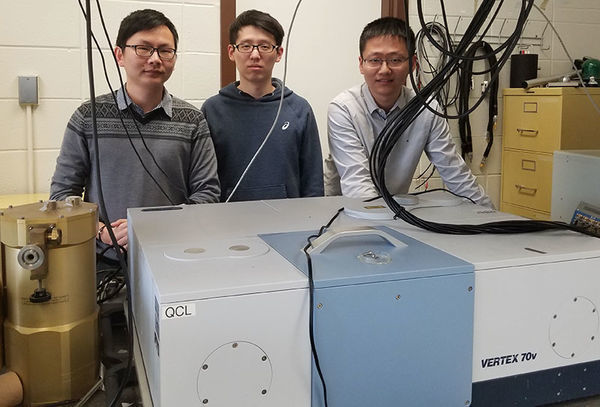
A powerful laser breakthrough
"Lehigh research team demonstrates terahertz semiconductor laser with record-high output power The ability to harness light into an intense beam of monochromatic radiation in a laser has revolutionized the way we live and work for more than fifty years. Among its many applications are ultrafast and high-capacity data communications, manufacturing, surgery, barcode scanners, printers, self-driving technology and spectacular laser light displays. Lasers also find a home in atomic and molecular spectroscopy used in various branches of science as well as for the detection and analysis of a wide range of chemicals and biomolecules. Lasers can be categorized based on their emission wavelength within the electromagnetic spectrum, of which visible light lasers -- such as those in laser pointers -- are only one small part. Infrared lasers are used for optical communications through fibers. Ultraviolet lasers are used for eye surgery." [...]
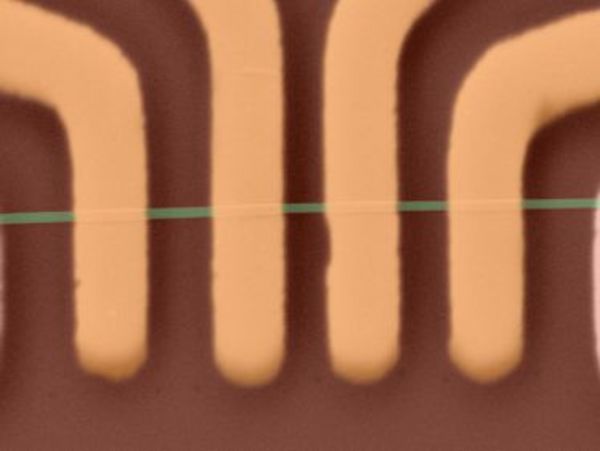
One-Dimensional Material Packs a Powerful Punch for Next Generation Electronics
"The new technology has applications in nanometer-scale transistors and circuits Engineers at the University of California, Riverside, have demonstrated prototype devices made of an exotic material that can conduct a current density 50 times greater than conventional copper interconnect technology. Current density is the amount of electrical current per cross-sectional area at a given point. As transistors in integrated circuits become smaller and smaller, they need higher and higher current densities to perform at the desired level. Most conventional electrical conductors, such as copper, tend to break due to overheating or other factors at high current densities, presenting a barrier to creating increasingly small components. The electronics industry needs alternatives to silicon and copper that can sustain extremely high current densities at sizes of just a few nanometers. The advent of graphene resulted in a massive, worldwide effort directed at investigation of other two-dimensional, or 2D, layered materials that would meet the need for nanoscale electronic components that can sustain a high current density." [...]
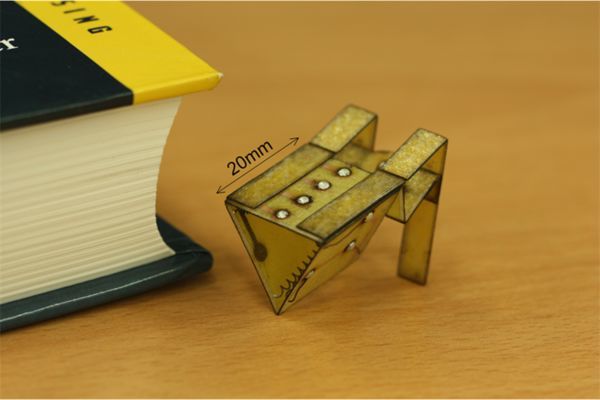
Why a robot can't yet outjump a flea
"How small creatures generate world’s fastest snaps, jumps and punches When it comes to things that are ultrafast and lightweight, robots can't hold a candle to the fastest-jumping insects and other small-but-powerful creatures. New research could help explain why nature still beats robots, and describes how machines might take the lead. Take the smashing mantis shrimp, a small crustacean not much bigger than a thumb. Its hammer-like mouthparts can repeatedly deliver 69-mile-per-hour wallops more than 100 times faster than the blink of an eye to break open hard snail shells. Or the unassuming trap-jaw ant: In a zero-to-60 matchup, even the fastest dragster would have little chance against its snapping mandibles, which reach speeds of more than 140 miles per hour in less than a millisecond to nab their prey. One of the fastest accelerations known on Earth is the hydra’s sting." [...]
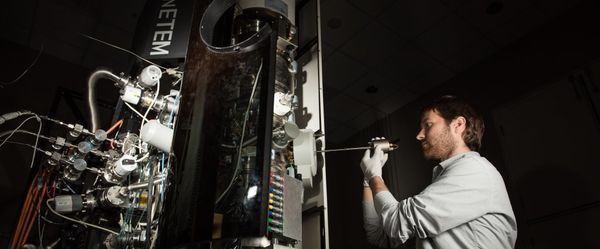
Liquid Cell Transmission Electron Microscopy Makes a Window into the Nanoscale
"From energy materials to disease diagnostics, new microscopy techniques can provide more nuanced insight. Researchers first need to understand the effects of radiation on samples. In a new paper published last week in Science Advances (DOI: 10.1126/sciadv.aaq1202), a team of scientists and engineers dug into the mechanisms that degrade sample quality in liquid cell transmission electron microscopy (LC-TEM). They developed an LC-TEM device that uses multiple windows and patterned features to explore the impacts of high-energy electron bombardment on nanoparticles and sensitive biological samples. The collaborating institutions include the EMSL, the Environmental Molecular Sciences Laboratory, a Department of Energy Office of Science User Facility at the Pacific Northwest National Laboratory (PNNL), University of Illinois Chicago, Florida State University, Washington State University and Michigan Technological University. The study's lead author, Trevor Moser, currently at the PNNL, is a doctoral student at Michigan Tech studying under both Tolou Shokuhfar, an adjunct professor of mechanical engineering at Michigan Tech and an associate professor of bioengineering at the University of Illinois Chicago, and James Evans, a senior scientist at PNNL." [...]

Scientists create innovative new 'green' concrete using graphene
"A new greener, stronger and more durable concrete that is made using the wonder-material graphene could revolutionise the construction industry. Experts from the University of Exeter have developed a pioneering new technique that uses nanoengineering technology to incorporate graphene into traditional concrete production. The new composite material, which is more than twice as strong and four times more water resistant than existing concretes, can be used directly by the construction industry on building sites. All of the concrete samples tested are according to British and European standards for construction. Crucially, the new graphene-reinforced concentre material also drastically reduced the carbon footprint of conventional concrete production methods, making it more sustainable and environmentally friendly. The research team insist the new technique could pave the way for other nanomaterials to be incorporated into concrete, and so further modernise the construction industry worldwide." [...]
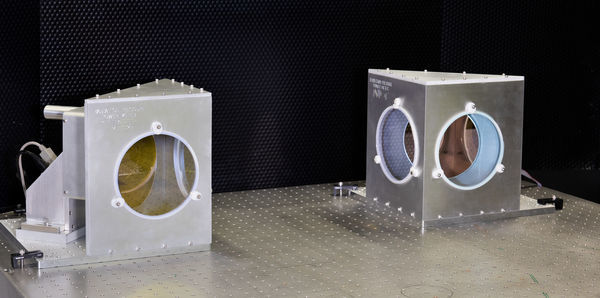
Taking The Heat: New High for NIST's 'Light Force' Laser Power Meter
"Researchers at the National Institute of Standards and Technology (NIST) have been developing a novel way of measuring laser power. Their device, called the Radiation Pressure Power Meter (RPPM), makes its measurements using the force exerted by the laser light itself. The NIST team has now fully tested this instrument at the highest power to date – 50 kilowatts (kW) – using a laser at the High Energy Laser Systems Test Facility (HELSTF) (link is external), operated by the U.S. Army and located in New Mexico. By comparison, a 5-kW laser beam can cut through an inch of steel. “We don’t have tens of kilowatts of laser power at our disposal here at NIST,” said NIST physicist Joshua Hadler. “This was an opportunity to go at power levels that we’ve never got to before.” NIST researchers had already tested their RPPM using their own highest-power laser, at 10 kW." [...]
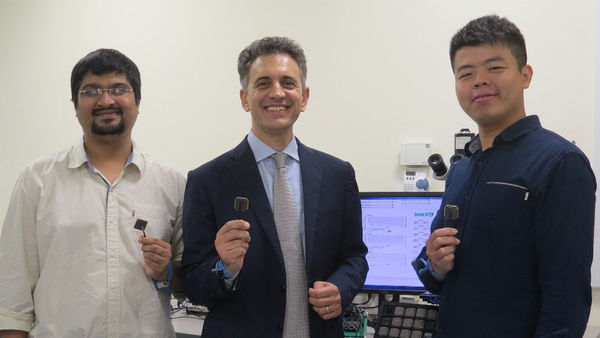
NUS engineers invent smart microchip that can self-start and operate when battery runs out
"Game-changing technology maximises lifetime and enables smaller, cheaper IoT devices The Internet of Things (IoT), while still in its infancy, is shaping the future of many industries and will also impact our daily lives in significant ways. One of the key challenges of moving IoT devices from concept to reality is to have long-lasting operation under tightly constrained energy sources, thus demanding extreme power efficiency. IoT devices – such as sensors – are often deployed on a massive scale and in places that are usually remote and difficult to service regularly, thus making their self-sufficiency essential. Currently, batteries in IoT devices are much larger and up to three times more expensive than the single chip they power. Their size is determined by the sensor node lifetime, which directly affects how often they need to be changed. This has an important bearing on maintenance cost and impact on the environment when batteries are disposed." [...]

Chemists Develop MRI-Like Technique to Detect What Ails Batteries
"A team of chemists has developed an MRI-based technique that can quickly diagnose what ails certain types of batteries—from determining how much charge remains to detecting internal defects—without opening them up. A team of chemists has developed an MRI-based technique that can quickly diagnose what ails certain types of batteries—from determining how much charge remains to detecting internal defects—without opening them up. “The use of alternative energy and electrically powered vehicles will further increase the demand for better and safer batteries,” observes Alexej Jerschow, a professor in New York University’s Department of Chemistry, who led the research team. “However, there are currently only a very limited set of tools available to diagnose a battery’s health without destroying the battery—our non-invasive technique offers a faster and more expansive method for making these assessments.” The work, described in the journal Nature Communications, also included Andrew Ilott, an NYU post-doctoral fellow at the time of the study and now a research investigator at Brisol-Myers Squibb; Mohaddese Mohammadi, an NYU doctoral candidate; and Christopher Schauerman and Matthew Ganter, research scientists at the Rochester Institute of Technology. “Ensuring cell quality and safety is paramount to the manufacturing process that can save companies significant cost and prevent catastrophic cell failures from occurring,” says Ganter, co-director of the RIT Battery Prototyping Center. “This work not only supports the battery industry as a whole, but also the growing energy storage ecosystem in New York,” adds Christopher Schauerman, co-director of the RIT Battery Prototyping Center." [...]
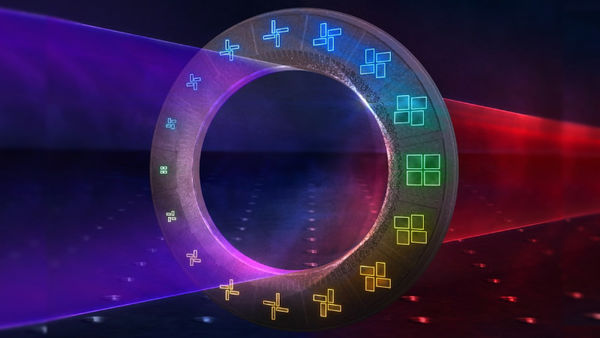
Morphing twisted nanoscale objects opens up a new way to tailor applications in future technologies
"Scientists have created a way to model interactions between light and twisted molecules, as they transition from left to right-handed versions, or vice versa. For the first time scientists have created a way to model the interaction between light and twisted molecules, as these molecules transition from left- to right-handed versions, or vice versa. The transitional forms offer a deeper insight into material symmetries and their unexpected behaviour could lead to improved design of telecoms components. Many molecules, including important pharmaceuticals and valuable chemicals, exist in two “chiral” forms – they have the same chemical structure arranged in mirror images, termed left-handed and right-handed forms. This can alter their properties and is therefore important to fully understand how the compound interacts with other molecules, or light. Typically, it has only been possible to study either the left- or right-handed chiral form but nothing in between, however ideally scientists would like to gradually morph a shape from one handedness to the other and observe how the effects of this change translate into physical properties." [...]
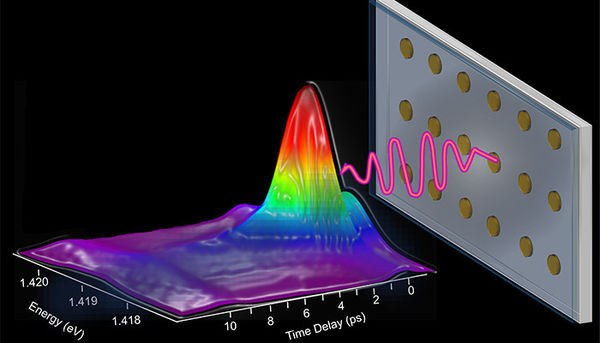
Ultrafast laser pulse created by golden nanoparticles
"The creation of a fast, tunable and stable nanoparticle-array laser is a stepping stone to affordable and efficient sensing and switching. New study shows that organic dye material combined with metallic nanostructures can provide ultrafast lasing dynamics with short and rapidly appearing laser pulses. ‘We wanted to find out how fast we can turn our laser device on and off. Generating laser pulses quickly can be very useful in information processing and can improve the response of some optoelectronic devices,’ explains postdoctoral researcher Konstantinos Daskalakis at Aalto University. The samples used in the experiments are made out of gold nanoparticles placed on glass and immersed in an organic, light-emitting material. The nanoparticles are arranged very close to each other in a square array." [...]

New thermal coatings for spacecraft and satellites developed using metamaterials
"A team of researchers, which includes the University of Southampton, have developed new technology which could prompt a significant change for a spacecraft or satellite. Metamaterial Optical Solar Reflectors (meta-OSRs) are the first-surface coatings on the outside of a spacecraft, designed to effectively radiate infrared heat away from it while reflecting most of the optical solar spectrum. For a satellite or spacecraft, the OSRs play a crucial role in the system’s thermal control. Glued to the external skin of the radiator panels, OSRs are designed to reject solar radiation and dissipate the heat that is generated on board. OSRs are commonly made of quartz tiles that combine thermo-optical properties with an ability to withstand the environment in space. However, quartz tiles are heavy and fragile, add significantly to assembly and launch costs, and cannot be applied to curved surfaces." [...]
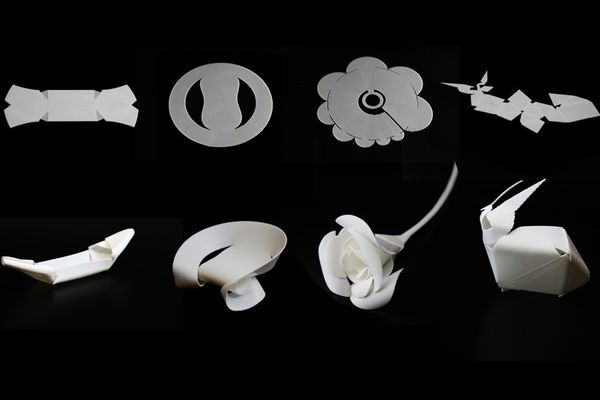
Cheap 3-D Printer Can Produce Self-Folding Materials
"CMU process takes advantage of a common printing defect Researchers at Carnegie Mellon University have used an inexpensive 3-D printer to produce flat plastic items that, when heated, fold themselves into predetermined shapes, such as a rose, a boat or even a bunny. Lining Yao, assistant professor in the Human-Computer Interaction Institute and director of the Morphing Matter Lab, said these self-folding plastic objects represent a first step toward products such as flat-pack furniture that assume their final shapes with the help of a heat gun. Emergency shelters also might be shipped flat and fold into shape under the warmth of the sun. Self-folding materials are quicker and cheaper to produce than solid 3-D objects, making it possible to replace noncritical parts or produce prototypes using structures that approximate the solid objects. Molds for boat hulls and other fiberglass products might be inexpensively produced using these materials. Yao will present her group's research on this method, which she calls Thermorph, at CHI 2018, the Conference on Human Factors in Computing Systems, April 21-26 in Montreal, Canada." [...]
Modelos 3D
Com a disponibilidade de ferramentas que permitem dar azo a nossa imaginação na criação de peças 3D e espaços como o thingiverse para as publicar, esta rubrica apresenta alguns modelos selecionados que poderão ser úteis.

Woodworking Angle Meter
"Simple woodworking angle meter with ruler. Model is not customizable but I've added scad file so you can modify it as you wish (it's really simple). Usable length of the ruler: 18cm. Step of angle meter: 1 degree (5 and 10 marks are highlighted)" [...]
Projetos Maker
Diversos Projetos interessantes.
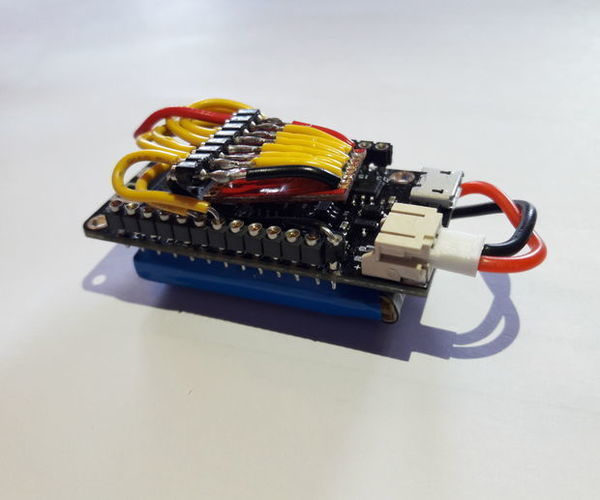
Spying Remote Control to Open a Garage With an App
"Who has never dreamed of going home just with a phone app, or being able to listen to and recopy data trams? I am happy to be able to share with you what I realized, and how I proceeded. I started this project after the second time I forgot my keys... Of course, the encoding, the type of modulation, the frequency of the carrier, the bluetooth connection information, and the datas that I'm going to show in example are not the originals, I prefer not to have visitors ;-). This application applies to any object capable of receiving digital information by electromagnetic waves (garage door, car, some shutters ...). The entire system consists of an object connected by bluetooth to a phone, this object being able to send the same frames as the remote associated with what we want to hack. I placed this object in my garage, and I can connect to it from the outside." [...]

Alexa-Enabled Death Star Lamp
"Bring a snippet of the Dark Side to your living room with this unique voice-activated lamp. A functional work of art that is both useful and pleasing to look at. Switching on or off? All lamps do that! Changing brightness? Very common!" [...]
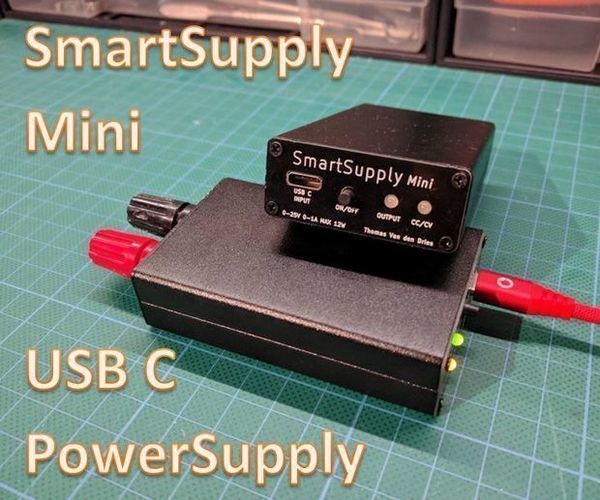
Digital Pocket Powersupply
"Ever wanted a powersupply that you can use on the go, even without a wall outlet nearby? And wouldn't it be cool if it was also very precise, digital, and controllable via PC and your phone? In this instructable I will show you how to build exactly that: a digital powersupply, which is powered over USB C. It is arduino compatible and can be controlled via the PC over USB or via your phone over Bluetooth. This project is an evolution of my previous powersupply, which was battery operated and has a display and knobs. Check it out here! However, I wanted to go smaller, so that's why I made this!" [...]
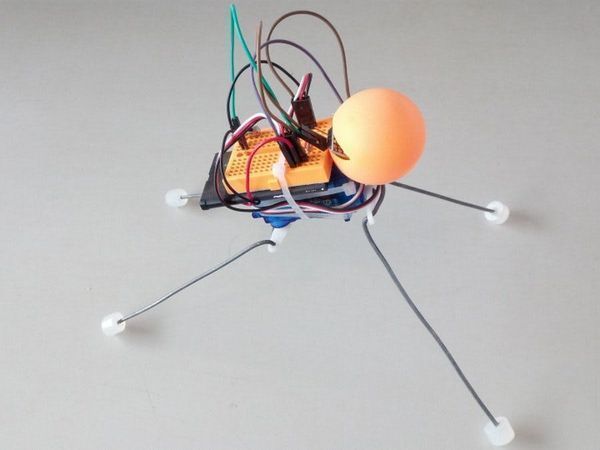
Ugly Bug
"A walking insect looking thing made from leftovers. Here is a quick and easy little robot that can be built and assembled in about half an hour with the right tools and parts. I didn't invent it. I saw a video of a thing like this on youTube and thought 'Hey, that looks fun, Ill build one' So I grabbed some servos out of my junk box, an old cellphone battery I had kept in the hope of finding something cool to do with it, an arduino pro 3.3v that I had bought on a whim because I needed to reach the quota for free delivery and went to work. An hour or so later, here it was! Let's start with the basic assembly." [...]
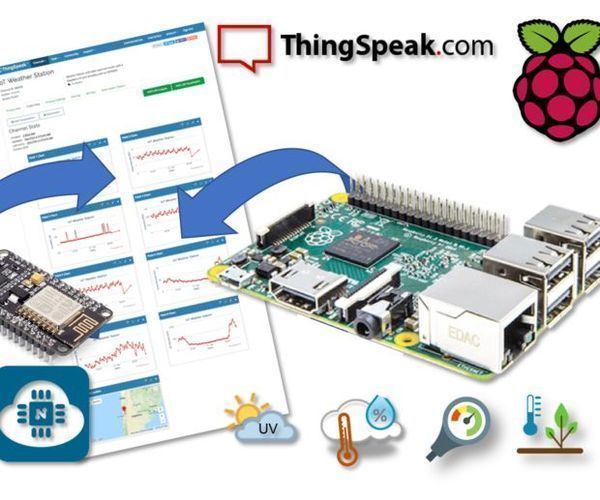
IoT Weather Station With RPi and ESP8266
"On previous tutorials, we have been playing with NodeMCU, sensors and learning how to capture and log data on ThingSpeak (an Internet of Things (IoT) platform that lets you collect and store sensor data in the cloud and develop IoT applications): IOT MADE EASY: CAPTURING REMOTE WEATHER DATA: UV AND AIR TEMPERATURE & HUMIDITY With this new tutorial, we will learn how to do the same but on this time, using a Raspberry Pi to capture data from several different sensors and also exploring different ways of communicating between devices and the web : Sensors and Cominication type: DHT22 (Temperature and Humidity) ==> Digital communication BMP180 (Temperature and Pressure) ==> I2C Protocol DS18B20 (Temperature) ==> 1-Wire Protocol" [...]

Morse Code Keyboard
"This project is a small keyboard where the user types in Morse code and characters are output to an attached computer. The unit was inspired by the US Dot-dash coder (CO-3B, MX-4495). I posted my first generation version on Arduino project hub and since then I have improved my project. This version features 5 software debounced switches and 4* 5Volt indicator LEDs wired up to a Chinese Pro Micro clone, all mounted on a custom PCB. " [...]

Grow It Yourself | GIY
"An automated, smart, self-contained growing system that cultivates plants from seed to maturity! I was greatly inspired after watching the TED Talk about Digital Farming, delivered by the director of MIT’s Open Agriculture Initiative, Caleb Harper, which came up with the topic: This Computer will Grow your Food in the Future. The most important question addressed in his talk that really inspired me was What if we could grow delicious, nutrient-dense food, indoors anywhere in the world? And here the idea was born! So, what I am trying to do is something like a box or incubator, which is able to create ideal climate conditions necessary for growth, providing exactly the amount of light and nutrients that a plant needs. I want to build a sunlight emulator, irrigation system, and climate controller wrapped into one elegant and modern design." [...]
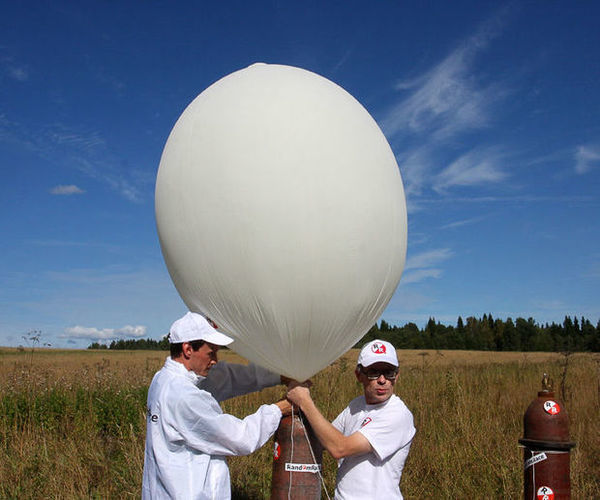
Electronic Barometric Altimeter for Stratosphere Balloons
"Our team, RandomRace.ru, launches helium balloons. Small and big, with cameras and without. We launch small ones to randomly drop checkpoints for adventure race competitions, and big ones to make great videos and photos from the very top of the atmosphere. It's not the space yet, but at 30 km of altitude air pressure is about 1% of normal. Does not look as the atmosphere anymore, huh? My responsibility in the team is electronics, and I wanna share one of my projects implemented on that duty." [...]
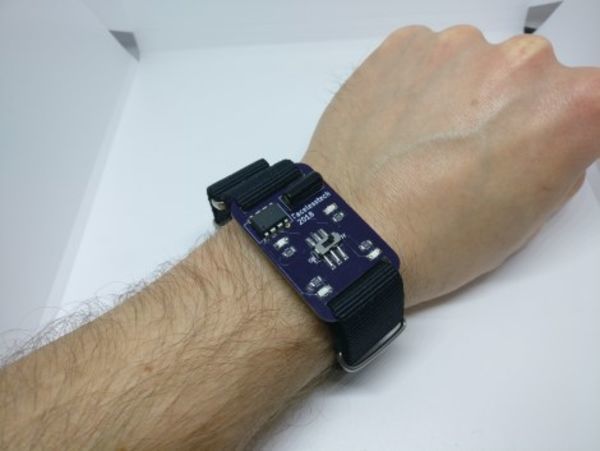
ATtiny wearable
"t’s a foundation for a wearable platform. It’s a Nato watch strap threaded through a PCB with a coin cell battery holder between the PCB and the strap. I’m using a Attiny85 this time around but could be used for most chips/dev boards. This is a proof of concept to iron out any problems I’ve overlooked. Hardware So you know when you have an idea kicking round in your head but there are a few problems to solve before you can make it. Well I wanted to make a wearable but was struggling with a way to do the strap, I was browsing aliexpress and came across a watch strap called the “nato”." [...]

Smart Bartender
"Why spend lots of money going out for drinks when you can have your own smart personal bartender at your service right in your home?! Tired of paying $12 for a small drink at the bars? Well be tired no more. You can have your very own personal bartender in your home, and also be the envy of your friends. We built a smart, Raspberry Pi powered bartender that can make drinks by mixing up to 6 ingredients together at the same time, so you can have anything from a rum and coke to a long island iced tea. The bartender can be customized to make any number of drinks, can be expanded to mix more ingredients, and also has the potential for connectivity with Alexa and Google Home / Google Assistant." [...]
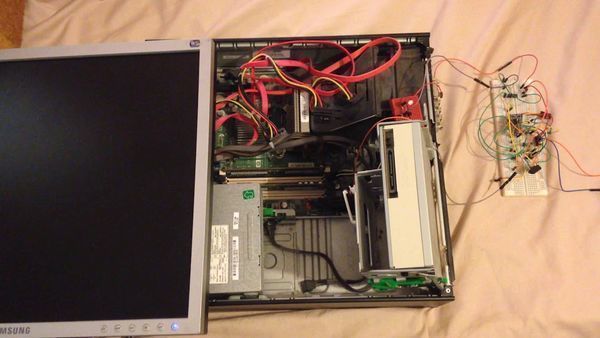
Building an ESP8266 PC Power Cycler
"I know this sort of project has been done before but nevertheless it’s still an interesting project to try and put your own spin on it. The idea is to have an ESP8266 which can press/hold the power button and might as well have it also read the power LED state, you could also wire up the reset button if you wanted to, it’s a good concept for servers (or PCs) which don’t have a remote management and you need something basic. One option might be using the 5V standby power which most power supplies provide when the PC is off. Some PCs might have 5V standby available in the BIOS, the keyboard and mouse might stay on, maybe you could find some pins on the mainboard but perhaps some mainboards might not have it? Let’s just avoid it all, I’m thinking I could have the ESP8266 powered off a 3.3V LiFePo4 battery in a small little case which when the PC is on, it will recharge itself via USB, this way we don’t need the PC to be on or have the ESP8266 powered via a mains adapter. For the circuit, we can sense the power LED, it will have a voltage drop out say 2-3V with the LED but could have 5V if the LED isn’t connected for whatever reason, we’ll just use a NPN to switch 3.3V on or off to our input pin." [...]
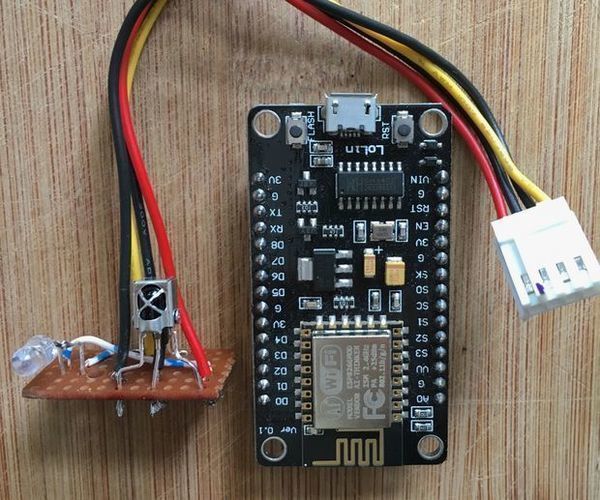
Web IR Remote With Esp8266 (NodeMCU)
"Problem There are three remotes on the living room table. To watch your favourite show you have to precisely follow a special sequence of button pushes on at least two of them. And your roommate, mom, girlfriend never remembers those.. Solution You buy a Logitech Harmony ;-) But if you don't want to spend this money you can build something similar for under 10$.By connecting a infrared LED to a ESP8266 (s.th. like an Arduino but with WiFi onboard) we can easily construct a device with which we can control devices with a small webpage from any computer or mobile phone in your WiFi. What you need NodeMCU development board (they ship from Asia for < 5) IR sensor ( OS-1838B or TSOP38238) IR LED 100 Resistor NPN Transistor (i.e." [...]
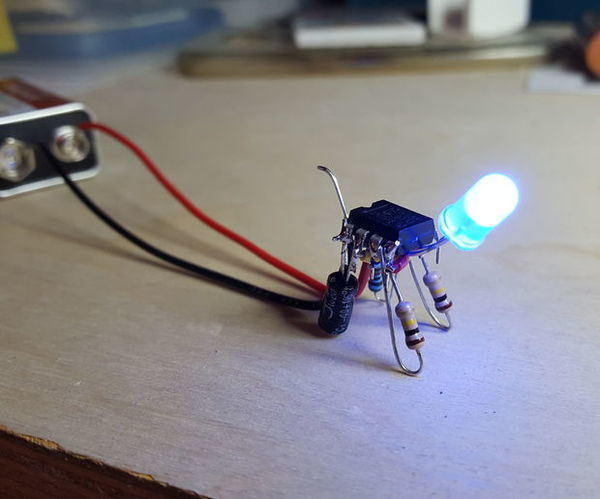
Dead Bug Doggie
"Dead bug soldering is a style of soldering circuits without using a Printed Circuit Board (PCB).Typically, the goal is to just wire up the circuit so it works, but what if we arrange the components in such a way so it looks like something... say a dog?! " [...]
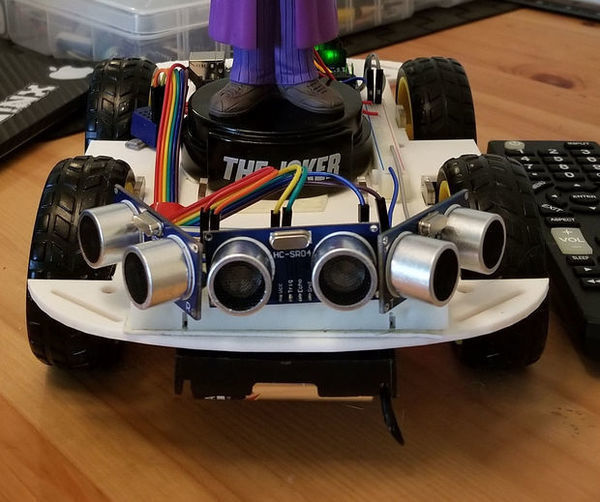
The Autonomous Remote Controlled Car
"This instructable was created in fulfillment of the project requirement of the Makecourse at the University of South Florida (www.makecourse.com). This project demonstrates how an Arduino along with a Dual H-bridge Motor Drive is able to control four DC motors and three ultrasonic sensors. The objective here is to demonstrate the circuit schematic and C program that allows the RC car to drive autonomously while avoiding all obstacles in its path. Along with this, this car will also be controlled via an IR remote. Once accomplished, this car will be able to utilize two modes: the autonomous mode and the remote control mode. The autonomous mode will allow the car to move freely without coming into contact with its surroundings." [...]
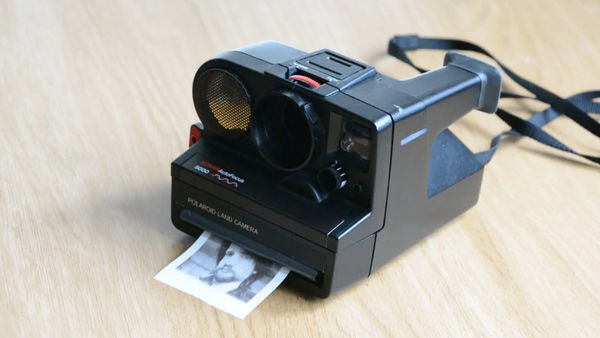
Thermal Paper Polaroid
"It feels like only the other day I was going on about an instant camera that uses thermal paper being one of my abandoned dreams. I abandoned it because I found out it had already been done, and isn't particularly hard. But! Soon after, I decided that that's a terrible way to see things, and if we stuck by that, we'd never get much done, let alone learn anything. So here is my attempt at an instant camera that prints onto thermal paper. This project was partly done as a collaboration with Tom, who knows a lot about Linux and whose face is visible in some of the pictures." [...]
Arduino FR632 RSSI Antenna Tracker
"This tracker not use any gps system. This tracker use a diversity video receiver and a arduino pro mini, through the analog inputs arduino read the RSSI sinal percentage from receivers. Sinal its compared and servo follow the stronger RSSI signal. No pairing, no telemetry, no configuration. Only you need adjust the value RSSI_MAX and RSSI_MIN in the arduino code about your receiver. " [...]
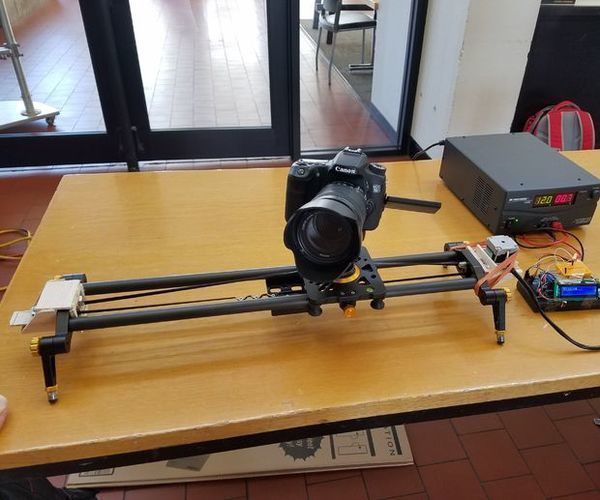
Motorized Camera Slider
"I have always been an avid photographer and cinematographer. The one thing i was missing was a unit to help me with smooth shots in little movies that I made. So, I presumed to by this Camera Slider from amazon. From the time that I starting searching for the right slider I knew I wanted a motorized one to be able to do time lapses and other shots without having to push the slider myself. The big problem was that almost all manufactured motorized sliders run for over $500. I settled with the slider I have now." [...]
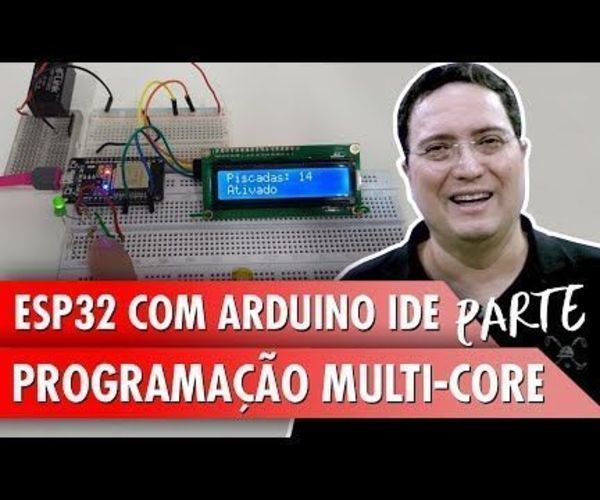
ESP32 With Arduino IDE - Multi-Core Programming
"It isnt common for a relatively small microcontroller to have two cores. This is precisely why we will highlight today this marvel of ESP32, which is Multi-Core Programming. I have already mentioned this in other videos, which I intend to talk more about in a complete playlist. I also plan to discuss the FreeRTOS (Free real-time operating systems), which is an operating system for microcontrollers that allows for easy programming, deployment, protection, connection and management for devices of small and low capacity. Returning to the topic of todays project, let's create a program where different tasks are executed simultaneously in different cores. To do so, we will introduce you to Multi-Core Programming in ESP32 in order to know its main functions." [...]
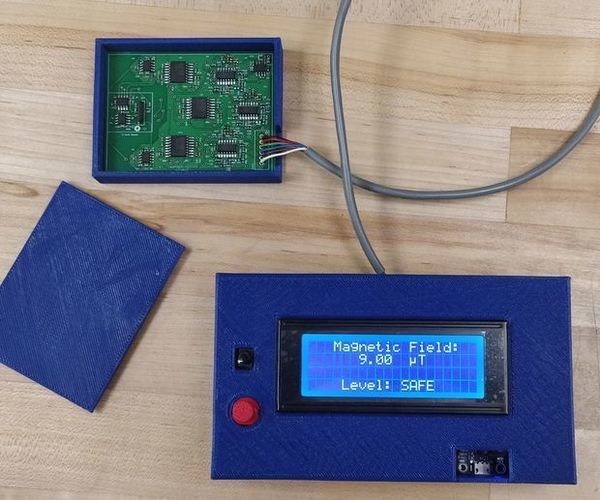
3-Axis Magnetic Field Sensor
"Wireless power transfer systems are well on their way to replacing conventional wired charging. Ranging from tiny biomedical implants all the way to wirelessly recharging huge electric vehicles. An integral part of the research on wireless power is minimizing the magnetic field density. The International Commission on Non-Ionizing Radiation Protection (ICNIRP) provides scientific advice and guidance on the health and environmental effects of non-ionizing radiation (NIR) to protect people and the environment from detrimental NIR exposure. NIR refers to electromagnetic radiation such as ultraviolet, light, infrared, and radiowaves, and mechanical waves such as infra- and ultrasound. Wireless charging systems produce alternating magnetic fields which could be harmful for human beings and animals present in the vicinity." [...]

How to Build a GPS Guided Robot
"We will start building the GPS Guided Robot in just a moment but first let me give you a little background on how this project came about. If your not interested in how the robot came into existence and why, feel free to skip to the next step. It is probably obvious to anyone who looks at my YouTube channel that I love to metal detect, It’s also obvious that I enjoy all things Arduino and building Robots. Up until a few years ago, 2014; I had never even heard of an Arduino until I stumbled upon a YouTube Video by Bob Rudolph aka (SentryGun53). I was very impressed to say the least! Using a laptop computer, a Logitech camera, and an Arduino connected to a few servos, the Project Gun would track the person or object and shoot them with a Paintball gun." [...]

Microbit-TVPong
"Play the classic Pong game on a TV - using BBC Microbits as paddles. Bluetooth also supported! This is Grant Searle's fantastic Pong game for the Atmel/Microchip ATMEGA328P, modified to also support digital up/down paddles. Original code at: http://searle.hostei.com/grant/AVRPong/index.html The above page also has details of the microcontroller circuit that forms the basis of this project (with additions). The aim was to produce a fun game that could be used in STEM coding workshops using BBC micro:bits as digital game paddles. " [...]

Led Disco Box
"How Make Your Own Led Disco Box" [...]
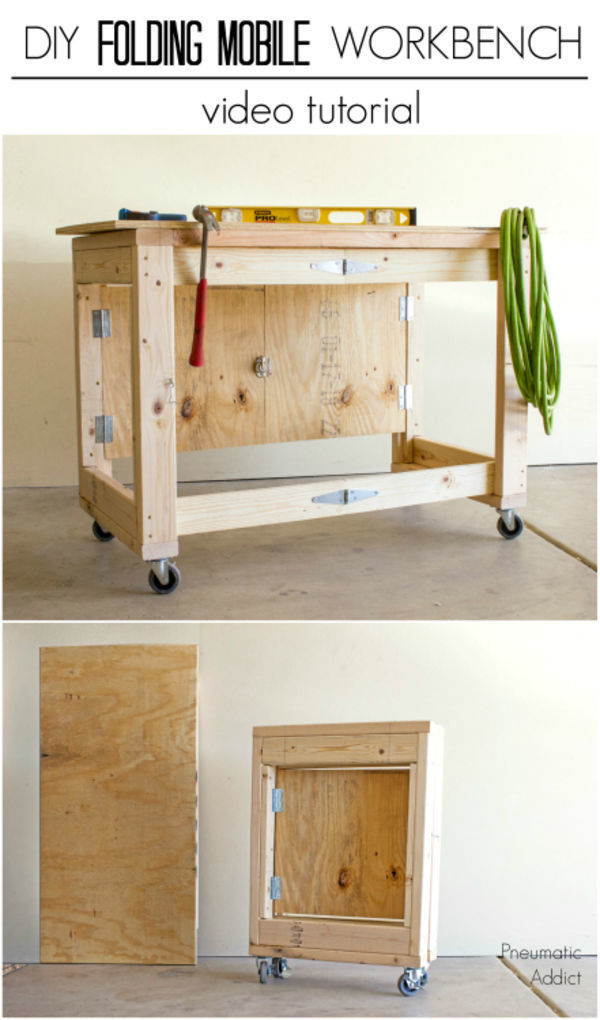
Folding Mobile Workbench
"I have a problem friends. My shop (A.K.A. my half of the two car garage), is a disaster. I desperately need more storage and organization. My husband is a maker too (cars, not wood) and we are just running out of room! I've been dying for a mobile workbench that I can assemble my furniture on but I had no idea where I would store it." [...]
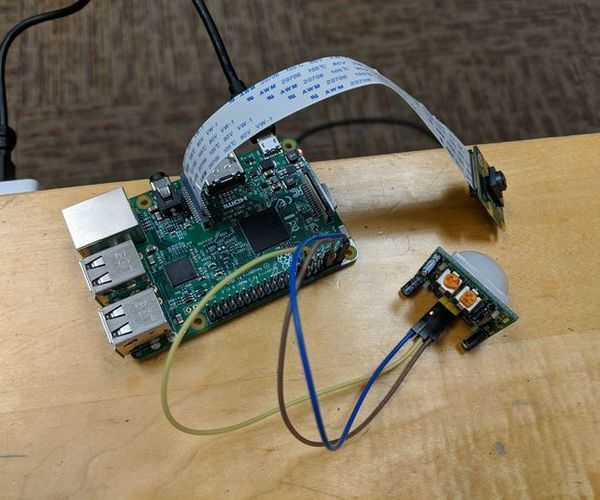
Raspberry Pi Human Detector + Camera + Flask
"In this tutorial, I will walk through the steps for my Raspberry Pi IoT Project -- Using PIR Motion Sensor, Raspberry Camera module to build a simple security IoT device, and Accessing the detection log with Flask. " [...]
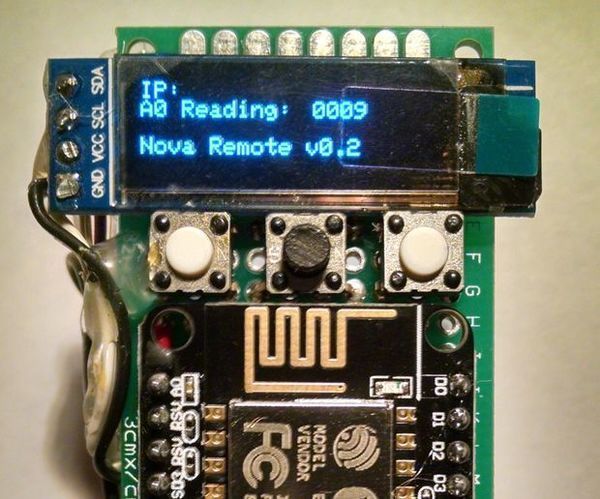
WiFi Pocket Remote
"A simple remote could come in handy for projects involving WiFi. You can make one from the following items: Three tactile buttons* ESP8266 v2 (Amica) IoT board (and the plastic wrapper it came in) 0.91" generic chinese LCD screen, adafruit library compatible3x7 centimeters pcb protoboard 9V battery 9V battery cableOn/Off switch aka 2-position slide switch* One 100 ohm resistor* Three 1000 ohm resistors* adhesive backed velcro (Optional)*Save money by salvaging this component from a broken stereo or similar junk device (try your local thrift store)" [...]
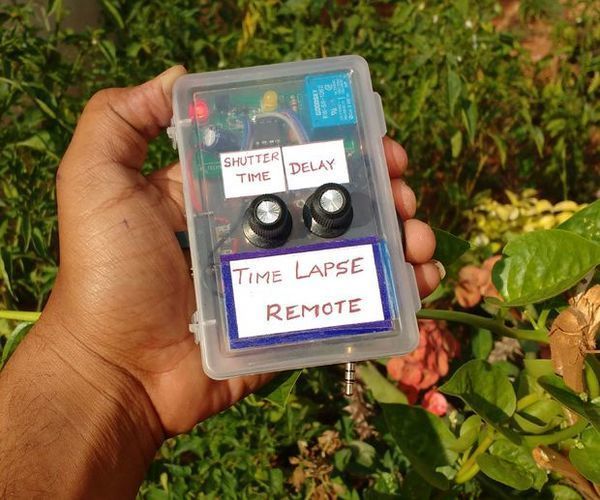
How to Make Time Lapse Timer Remote for Mobile Phone Camera| DIY Intervalometer
"If you want to shoot time lapse videos using your smartphone camera because you cannot always carry heavy camera equipment whenever you are travelling or you cannot afford for the expensive Camera rigs. There are of course many apps that can shoot time lapse videos but, the quality of the output is not very impressive or you cannot access the RAW images to make fine adjustments in Post Production. All you have to do is just Plug in this remote and set the timer and see the Magic Happen!! Just Checkout this Video! So in this Instructables let's find out how to shoot time lapses using smartphone and how to make a time lapse remote for your smart phone Camera. Also this works for DSLR Cameras." [...]

DIY IoT Lamp for Home Automation
"WiFi connected smart lamp built with an open message protocol. Control the lamp any way you can imagine. In this tutorial we're going to make an internet connected smart lamp. This will go deep into internet of things and opens up a world of home automation! The lamp is WiFi connected and built to have an open message protocol. This means you can select whatever control mode you want!" [...]
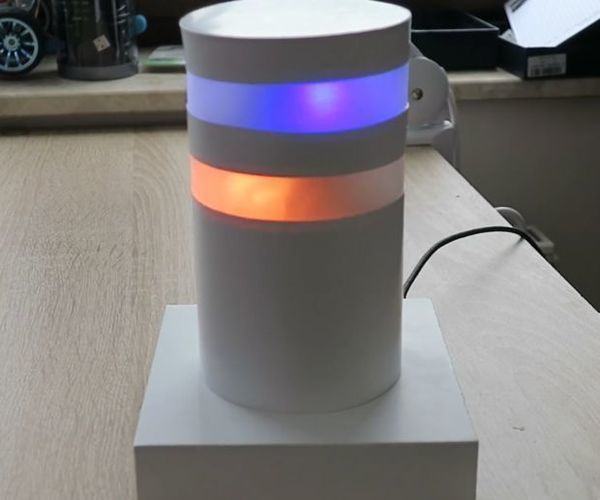
Notificator
"The device can be connected for example to the IFTTT system and react when a new mail appears. At app.remoteme.org we will generate a link after calling which bytes will be sent to Arduino, and Arduino will display some light effect and play some mp3 from SDcard" [...]
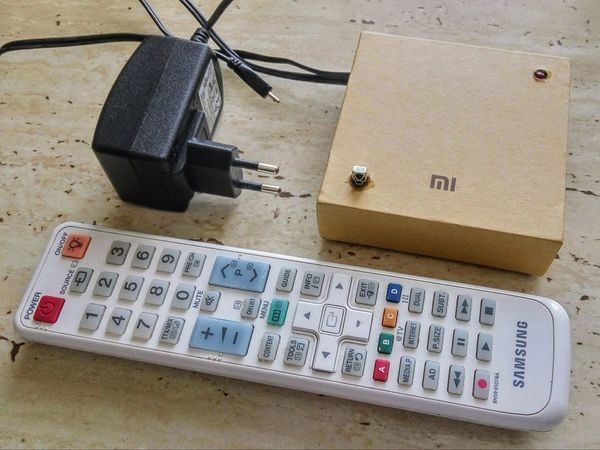
IR Remote Controlled Power Switch for Rapsberry Pi 3
"Arduino Nano based relay power switch for Raspberry Pi 3 (Kodi) operated by common TV remote controller. My laziness is my power ;-) I'm using Rapsberry Pi 3 based Kodi mediacenter to watch movies, TV series, pictures and listen music. I like to keep it switched off if it is not in use – it is not a problem to switch it off but to switch it on again I have to physically go to its AC/DC adaptor (5 steps! – a real exercise! ), unplug it and plug it again to start my Kodi. I know it should be possible to wake up Rapsberry using Wake on LAN, nevertheless I was never succesfull to configure and use this functionality." [...]
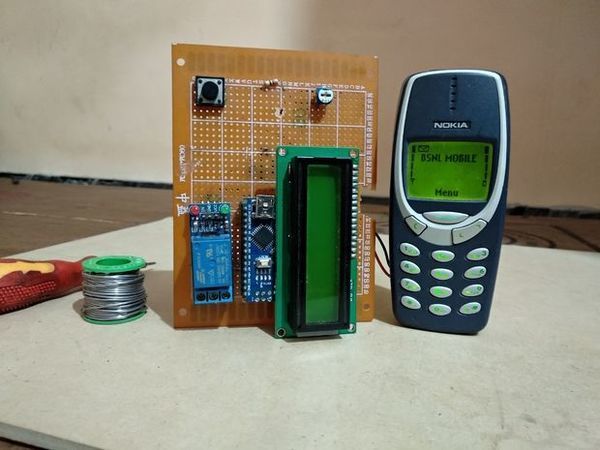
Convert Your Old Phone to a Remote Switch
"Ever wondered what to do with your old basic phones? The advent of a smartphone in last decade made all the basic phones obsolete. Even though they had good battery life and decent look they are less when compared to big smartphones which have big screens and lots of features. Even I had lots of these phones lying around. I did this project long back i.e 5 years back when I was in 11th grade. Here I did slight advancement when I saw this old project." [...]

Raspberry Pi Door Notifier
"Have you ever wondered if or when people are accessing doors? Do you want a discreet, cheap, and quick way to monitor door movement...and maybe a little project? Look no further! This simplistic device will track vibrations given off from moving doors and report back to the user with an email to a specified email address. This project will give you some practice with Flask, Raspberry Pis, GPIO sensors, and the Mandrill API! Not only is it fun to build but it has a lot of utility." [...]
Wireless Lunar Phase Tracker
"The Lunar phase tracker is a small, semi-portable device which allows you to gather critical information about the Moon. The device reports back parameters such as the visible illumination, the phase, moon rise and set times and more. This device is essential for anyone who has an interest in science or astronomy and provides a great desktop office decoration and is certainly a conversation starter. The project is fairly simple and requires an internet connected device such as an ESP32 however you can always adapt the code to work with a WiFi shield, Ethernet shield or any other internet connected device you may have. The Lunar Phase Tracker has been designed to work off Lithium-Polymer batteries and a very power efficient E-ink display which not only provides a wonderful screen to look at but also holds the last image even if the power goes off! " [...]

NodeMCU Hall Effect Rain Gauge
"This tutorial will show you how to make your own tipping bucket rain gauge with a wifi enabled Arduino device that automatically sends data back to an online platform of your choice. In our case we are sending the data back to the readiness.io service. " [...]
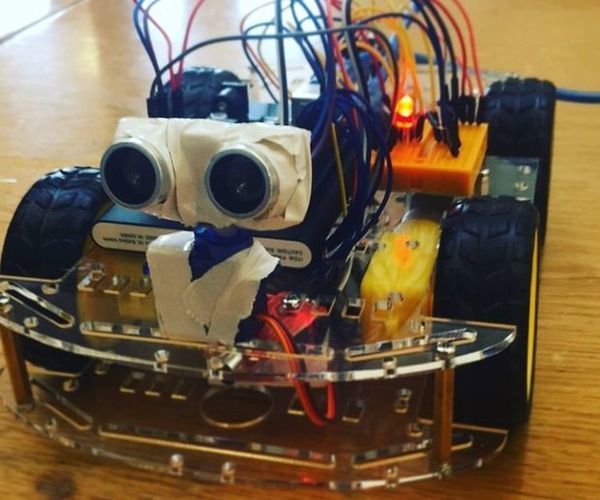
ALFRED: Sensor Based 4WD Vehicle
"This Instuctable shows how to make a sensor based vehicle. The sensors used are the ultrasonic sensor, microphone sound sensor and IR sensor receiver. The vehicle is aware of his surroundings so he will try not to hit obstacles but if he does he will detect the sound of impact and back up. He can be controlled with a remote. More detailed explanation of Alfred: By using the arrows on the remote and the middle button, the remote can tell Alfred where to go. When pressed forward he will go until he cant go further or told to stop." [...]
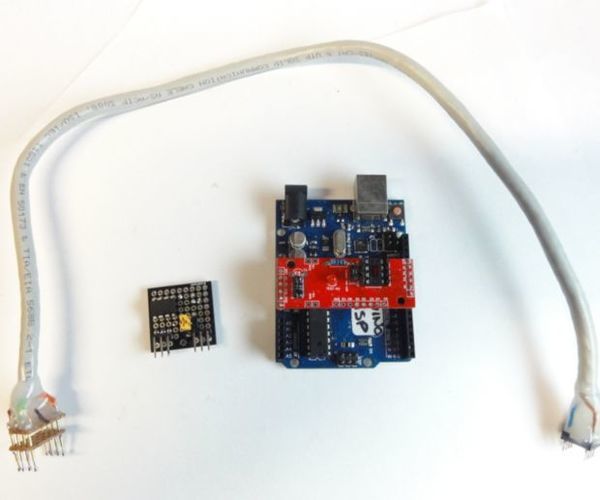
IOT123 - Attiny85 Onboard Programming Jig
"On the BRICK designs I have mentioned the through-holes adjacent to the ATTINY85 have been left unused, to enable a pogo pin programmer while the DIP8 is soldered to the PCB. This is that pogo pin programmer. This really is just an adapter lead from an existing programmer's DIP8 DIL socket to the 6 x 4 hole spacing pogo jig to use on the PCB. " [...]

How to Make an LED Heart Display
"Create a free standing and battery-powered LED heart for your sweetheart! Ah, Valentine's Day. What's a nerd to do except somehow use it as an excuse to build something? My husband can be weary of homemade electronics, so it needed to be something that did not look like it would catch on fire. I decided to make an LED heart that was battery powered, with a switch for easily turning it off. For this project, we will be using screws and stripped wire to put LEDs in parallel in the shape of a heart." [...]
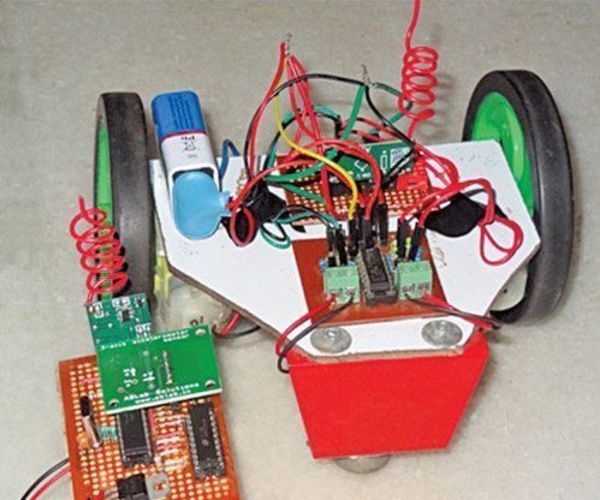
Wireless Gesture Controlled Robot Using Micro-controller ATmega328
"In this wireless gesture controlled robot project I am going to control a robot using hand gestures. This is an easy, user-friendly way to interact with robotic systems and robots. An accelerometer is used to detect the tilting position of your hand, and a microcontroller gets different analogue values and generates command signals to control the robot. This concept can be implemented in a robotic arm used for welding or handling hazardous materials, such as in nuclear plants. " [...]

Hot Ninja
"Multifunctional network device for autonomous activity in the city environment. Its main function is communication and propaganda through the Wi-FI wireless standard. This is the hacktivism diy response to attempts by the authorities in different countries to control the Internet. The project serves as an example of the possible opposition and decentralisation of networks to ensure communications and provide notifications irrespective of whether there is access to the global internet or certain restrictions are applied. The device consists of three standalone Wi-Fi access points based on the esp8266 chip and Arduino Mega board, which is the core brain of the system. The device is also equipped with a keyboard for typing text and OLED screen for convenience of use." [...]
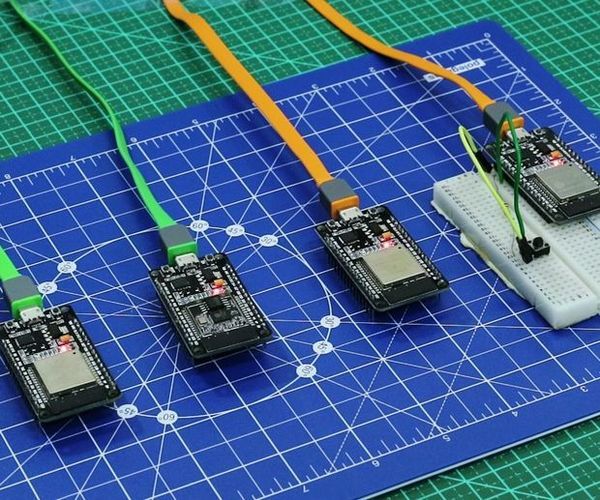
ESP-NOW: WiFi With 3x More Range
"When using the ESP-NOW protocol for bridging between multiple ESP32s, our WiFi has up to 3 times more range (480 meters total). We achieved this 2.4GHz wireless network with the built-in antennas of the ESP32. In our project today, therefore, an ESP32 will read a pin and send the value to another ESP32. This other ESP32 will receive this value, change the output of the pin, and send this value to an upcoming ESP32. The next ESP32 will do the same thing and go over to the next ESP32. In short, I set up a remote control with two bridges in the middle." [...]

Dont Mess With Da Monkey
"This useless robot will panic if you get very close. By shaking its arms it will try to push you away but truth is this monkey needs love! Material Needed: Servo Motor 1 (HS-422) Servo Motor 2 (HS-805) Ultrasonic Range Detector Breadboard Mainboard Wires 0.5mm Plexiglass 0.5mm plastic strong glue double side tape EPS Polystyrene Foam board" [...]

Arduino Ultra Mega Timers
"Hi! "Arduino Timer with on/off setpoint" is my most viewed instructable by far, so i got a lot of questions in the comments, inbox and youtube, about how to add minutes,seconds, days and save settings on the eeprom.... so i decided to bring an old code, made with PIC, to arduino, easier to share and make. I tried to make this project compact, easy to use and set up, with 3 buttons and a 16x2 lcd.The interface is based on my previous instructable "Turn single screen into multiple screens". If you want to learn how this interface was made, please visit: https://www.instructables.com/id/Arduino-LCD-16x2-Turn-Single-Screen-Into-Multiple-/ Here you have 6 codes to choose: All timers are hours,minutes and seconds (on/off) programmables. Save data on the eeprom. -1Timer for everyday, -1Timer, selectable day -4 Timers." [...]
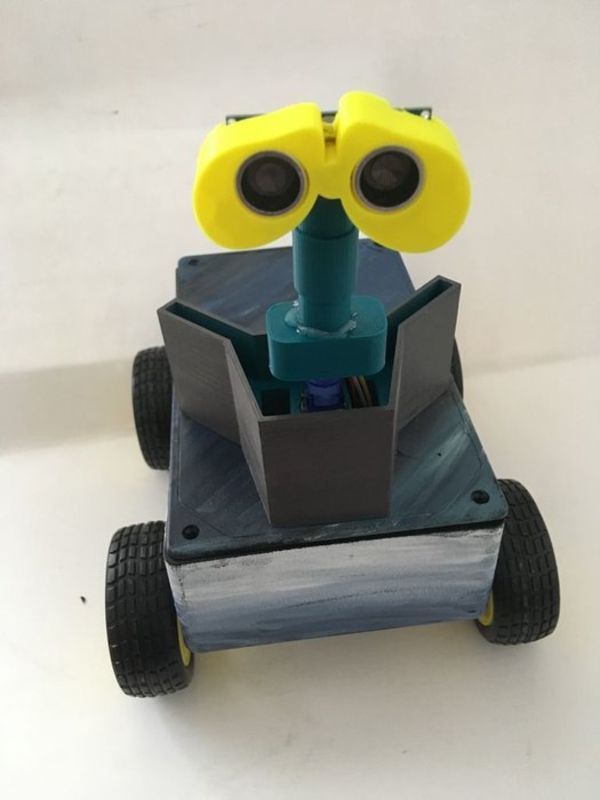
Rob the Automated Robot
"This instructable was created in fulfillment of the project requirement of the Makecourse at the University of South Florida (www.makecourse.com). In this tutorial you will learn how to make a fully automated robot named Rob who is equipped with sensors that allow it to detect obstacles. Rob moves until he comes into contact with an obstacle and then he stops, checks his surroundings and continues on a path that is free from obstacles. To create this robot, a knowledge of Arduino and C++ isn't necessary but it does help! Let's get started! " [...]
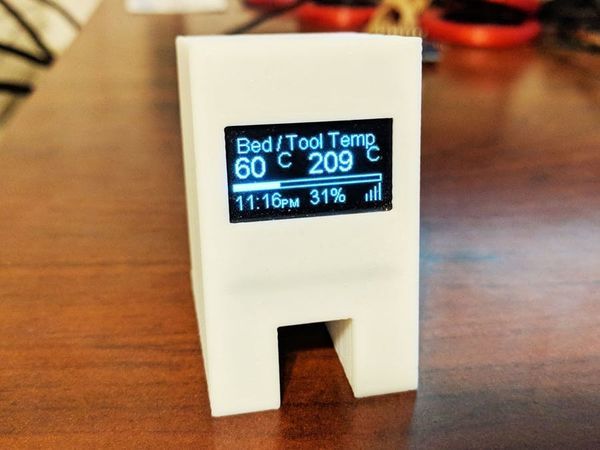
3D Printer Monitor for OctoPrint
"Monitor your 3D printer over WiFi with a Wemos D1 Mini and OLED display. Printer Monitor (OctoPrint 3D Printer Monitor) Features: Displays the print status from OctoPrint Server Estimated time remaining Time Printing Percentage complete Progress bar Screen turns off when printer is turned off or disconnected Screen turns on when printer is Operational or connected Sample rate is every 60 seconds when not printing Sample rate is every 10 seconds when printing Fully configurable from the web interface (not required to update Settings.h) Supports OTA (loading firmware over WiFi connection on same LAN) Basic Athentication to protect your settings Video: https://youtu.be/niRv9SCgAPk Required Parts: Wemos D1 Mini: https://amzn.to/2qLyKJd 0.96" OLED I2C 128x64 Display (12864) SSD1306: https://amzn.to/2JDEAUF Wiring for the Wemos D1 Mini to the I2C SSD1306 OLED SDA -> D2 SCL -> D5 VCC -> 5V+ GND -> GND- 3D Printed Case by Qrome: https://www.thingiverse.com/thing:2884823 Compiling and Loading to Wemos D1 Mini It is recommended to use Arduino IDE. You will need to configure Arduino IDE to work with the Wemos board and USB port and installed the required USB drivers etc. USB CH340G drivers: https://wiki.wemos.cc/downloads Enter http://arduino.esp8266.com/stable/package_esp8266com_index.json into Additional Board Manager URLs field. You can add multiple URLs, separating them with commas. This will add support for the Wemos D1 Mini to Arduino IDE." [...]
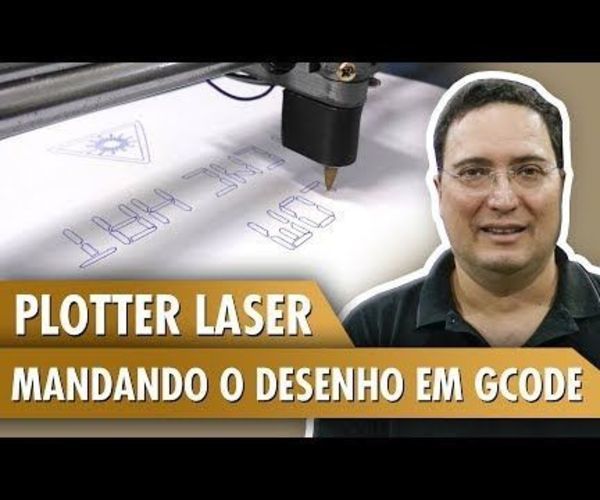
Laser Plotter: Sending the Drawing in GCODE
"While continuing the Plotter and Laser project with Raspberry Pi CNC HAT, we finish today the electronic part. Also, Ill discuss loading and performing a drawing. I really like this setup, especially considering the innovation of using a Raspberry instead of an Arduino. Soon, we will have a fourth video, where we will replace the pen that we have in our example by a laser. In the first video on this subject, we set up an XY table, which is the basis of this "printer, which serves both to record and cut certain materials, and involves the whole process of assembly of the mechanical part. In the second video entitled How to configure CNC with Raspberry Pi we prepared this microcontroller with the image RPI CNC V4 using HAT version 2.58, and then configured the GRBL." [...]

Interface Arduino with MPU6050 and Visualize the Data on GUI
"Roll and Pitch Data received from the MPU6050 sensor is visualized on the GUI Arduino Uno:- It is an Open source microcontroller board based on the ATmega328P microcontroller. The board is equipped with sets of digital and analog input/output (I/O) pins that may be interfaced to various expansion boards (shields) and other circuits. MPU6050 sensor:- It is an Inertial Measurement Unit(IMU). This sensor combines 3-axis gyroscope and 3-axis accelerometer on the same silicon die, with an onboard Digital Motion Processor™ (DMP™), which processes complex 6-axis MotionFusion algorithms. For datasheet, go to the link (https://www.invensense.com/wp-content/uploads/2015/02/MPU-6000-Datasheet1.pdf) The MPU6050 is interfaced with the Arduino according to the given schematic. There is a serial I2C communication between the two, with Arduino as Master and MPU6050 as slave." [...]
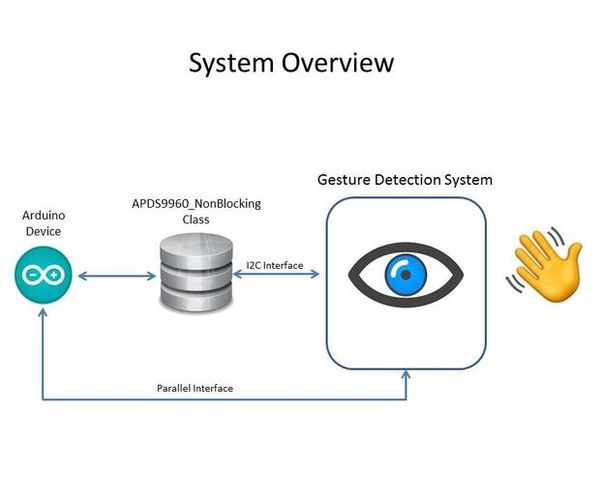
NonBlocking APDS9960 Gesture Sensor Implementation
"Preamble This Instructable details how to create a non-blocking implementation of the APDS9960 Gesture Sensor using the SparkFun_APDS-9960_Sensor_Arduino_Library. Introduction So youre probably asking yourself what is non-blocking? Or even blocking for that matter? More importantly why is it important to have a non-blocking anything right? Ok, so when a microprocessor runs a programme it sequentially executes lines of code and in doing so makes calls to and returns from functions according to the order in which you wrote them. A blocking call is just a call to any kind of functionality that causes a halting of execution, meaning a function call where the caller will not resume execution until the called function is finished executing." [...]
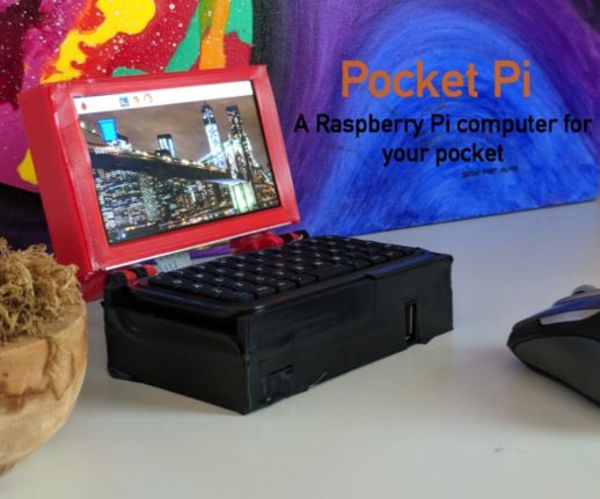
Pocket Pi - a Raspberry Pi Computer for Under $150
"This is a affordable $100 raspberry pi computer. This computer is not the thinnest or prettiest thing on instrutables. This is for getting the job done. The shell is 3D printed. There is 1 charging port, for the motherboard. The keyboard has a wire designated for charging the keyboard and will not be noticeable on the outside." [...]
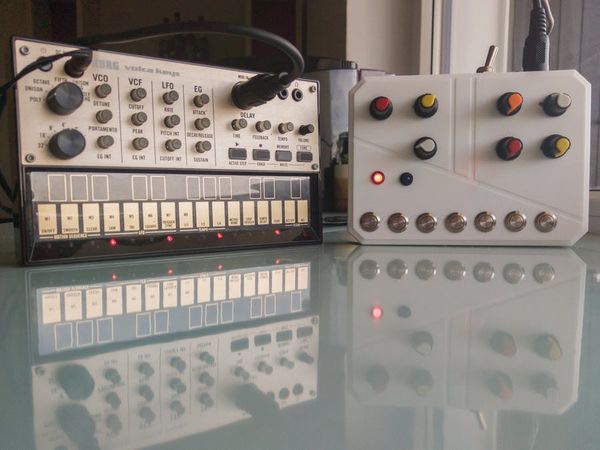
Arduino MIDI Arpeggiator
"The device that creates beautiful arpeggiated sequences according to the musical theory. Introduction Electronic music is my hobby and I have a lot of fun playing with my Korg Volca Keys. Some time ago I’ve met the web application called “Chord Progression Arpeggiator”, and I was impressed by the power and simplicity of the musical algorithms. Spend a couple of minutes on the app, and you would understand why I was so inspired by the idea of generating arpeggios on my Korg. The video “Korg Volca Keys beautiful arps! (and 128-note sequence)” shows manually entered arpeggio notes, but it is too complicated and inflexible to input all the notes by hands." [...]
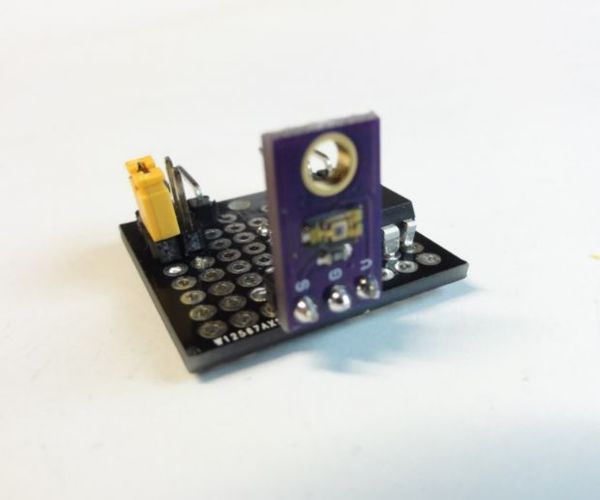
IOT123 - I2C Temt6000 Brick
"The IOT123 BRICKS are DIY modular units that can be mashed up with other IOT123 BRICKS, to add functionality to a node or wearable. They are based on the inch square, double-sided protoboards with interconnected through holes. A number of these BRICKS are expected to be on multiple nodes (Master MCUs - ESP8266 or ATTINY84) on a site. The MCU needs no prior knowledge of the sensors purpose or software needs. It scans for I2C nodes then requests a property dump (sensor data) from each slave. These BRICKs supply 5.0V, 3.3V and another AUX line which is customizable." [...]
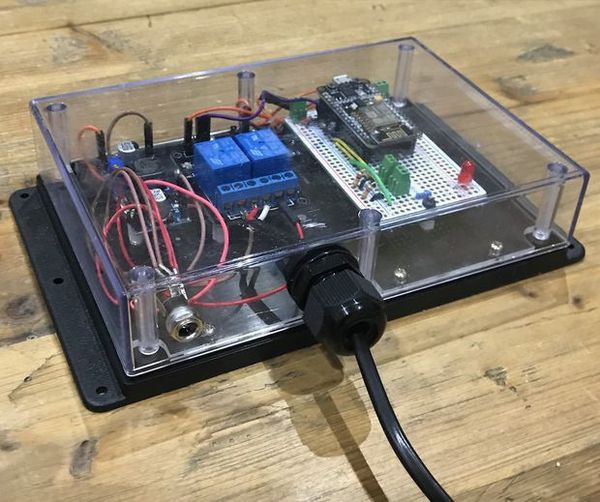
NodeMCU Relay Controlled Solenoid Valve
"In this tutorial we will show you how to use a NodeMCU and a relay board that can be used to control things like solenoid valves. We are going to use the readiness.io platform to observe a sensor (in this case a water level sensor) and if it is low, open our solenoid valve to let a tank fill up. The board we have created is fairly generic and provides for two inputs - that could be from push buttons or level switches or some other type of switch. It also has two outputs that are connected to two relays. There is also a DC-DC power module that allows you to power the NodeMCU from an external power supply up to 25VDC and provides the output for the relay board. " [...]

DIY Weighing Machine
"In today's Instructable, I'll show you how to build an easy but useful Weighing Machine. It is very sensitive and accurate up to 3 grams. The maximum weight it can measure is 20 kgs but I'll also show you how you can effortlessly build one that can measure up to 150 kgs. " [...]
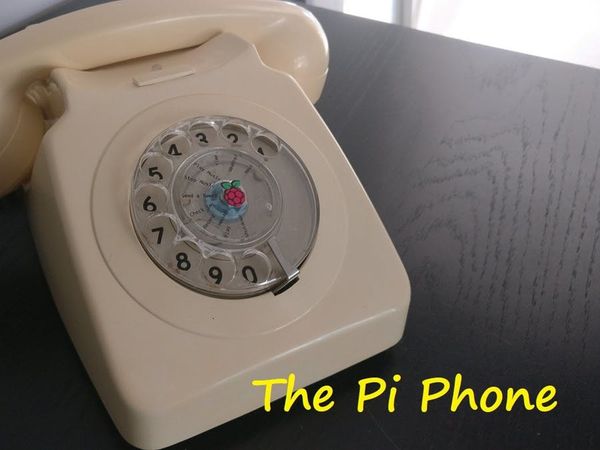
The Pi Phone
"A Raspberry Pi enabled retro smartphone from which you can check the news headlines, send a tweet, listen to SMS messages, and much more. The Raspberry Pi Phone This hack takes an old 1960s phone and combines it with the power of the Raspberry Pi to produce a retro smartphone. Each number on the rotary dial is assigned to a function. For example, dial 3 to hear the current time, dial 1 for the latest news headlines or dial 0 to power off the Pi Phone. I reused the original speaker in the handset. The wires were stripped down and then soldered to the Raspberry Pi as shown in the image below." [...]
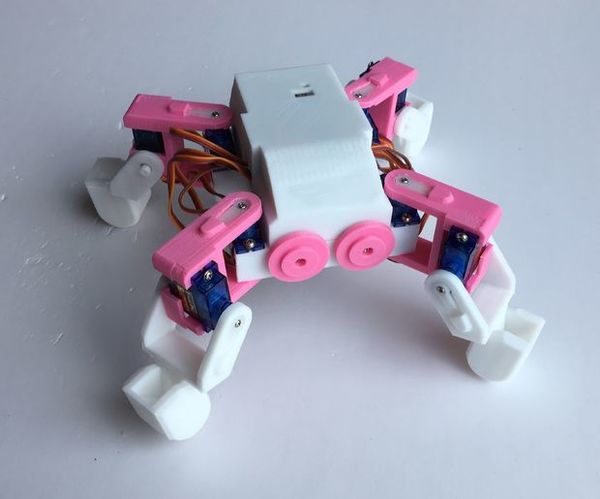
Ez Arduino MiniKame Mk2 - Making a 8 DOF 3D Print Quadruped Robot
"This is an inexpensive 3D printed 8 DOF quadruped robot using Arduino kind control board. It has two playing modes. One is autonoumose pilot mode which the robot walks and performs action randomly. The other is control mode where the robot is controlled by iPhone or Android phone via BLE technology. This instructable page contains detail of steps in sequence of videos to people who are interested to build one. " [...]
Neo Pixel, Fastest Thumb Game.
"I built this project because to take to my local Makerfaire In Newcastle, UK. The idea was to make a school yard game that would be relatively cheap and simple to produce. The idea is simple, to win you have to press the button repeatedly until you fill the pixel ring with light. You compete directly with an opponent and the winner gets a green flashing ring, whilst the loser gets a red flashing ring. To make the project, I used SolidWorks design, 3D printing and I designed the circuit boards using Fritzing. I had the circuit boards milled My University." [...]
That's all Folks!


